We Rated 15+ of The Best Natural Face Moisturizers On Their Ingredients

For many, moisturizers are an essential part of their skin care routine. Applying a face moisturizer daily to keep the skin hydrated is the first line of defense in keeping healthy, glowing skin—regardless of your age, skin type, or gender.
There are endless different moisturizers, each with their own unique ingredients, and needless to say, many of them can be toxic or harmful to the skin.
We took a deep dive into the world of facial moisturizers—specifically, the ingredients—to create an objective, science-based list of the best clean and safe facial moisturizers.
Our Methodology
We researched the internet, online stores and social media for the most popular clean moisturizers (along with some popular non-clean moisturizers for context).
Each ingredient in every product was researched and analyzed for safety based on available public research. Where possible, sources for information are included.
Products are ranked from best to worst with an internal score based on the ingredient rankings.
Notes On Ingredients:
Irritants: Ingredients marked with an asterisk (*) are potential irritants or allergens. Unfortunately, almost all of the products we looked at contain at least one potential irritant. The most common irritants are essential oils and some alcohols.
Preservatives: Some of the products we looked at had no preservatives at all. While this can be great in terms of clean ingredients, it means you must use the product before the expiration date, and be mindful of noticing any changes in color, texture or smell which could indicate the product has gone bad.
Some products contain more harsh preservatives, namely parabens.
Toxic preservatives that have been linked to breast cancer, hormonal disruption and skin irritation. Anything ending in “-paraben” such as methylparaben, ethylparaben and butylparaben is included.
Parabens are not part of the USDA National Organic Program (NOP) list, meaning they can be included in products labeled as organic—a trick you need to watch out for. Conversely, the European Union has banned products with parabens since 2012.
As of 2020, the FDA says of parabens: “We do not have information showing that parabens as they are used in cosmetics have an effect on human health.“
Because there are products with safer alternatives, we don’t recommend using products with parabens.
Phenoxyethanol and sodium benzoate are two other preservatives found in the products we looked at. These two ingredients are safer than parabens. However, sodium benzoate is a known potential skin irritant and phenoxyethanol, which is not recommended to be used in baby products due to irritation potential.
Because these two ingredients are widely considered to be a safer alternative to parabens, we give them an “iffy” rating as opposed to a “bad” rating for parabens.
Ingredients With Contamination Concerns: Some of the products we looked at had ingredients that have a risk of contamination with harmful chemicals.
These ingredients include all ethoxylated ingredients, namely those starting with polysorbate-, PEG-, Ceteareth-.
These ingredients are at risk of being contaminated with 1,4-dioxane, a known human carcinogen. For this reason, we give them an “iffy” rating.
Chemical Sunscreens: Moisturizers with SPF often use chemical sunscreens to achieve the sun production.
If your moisturizer has SPF, make sure it’s not using a chemical sunscreen to achieve this. For an in-depth look at these chemicals, see our sunscreen guide.
Chemical sunscreen active ingredients include:
- Oxybenzone
- Octinoxate
- Homosalate
- Octrocrylene
- Avobenzone
- Octisalate
A 2020 study showed that these active ingredients found their way into the bloodstream after just a single application. What’s worse is that the amount is accumulative—the more these chemicals are applied, the more they end up in the bloodstream.
The exact effect these chemicals might have on the human body is unclear, but since alternatives exist in the form of physical sunscreens, there aren’t a lot of good reasons to use products with these ingredients.
Fragrance: A very common reason for skin irritation, and a 2008 study found that 83% of drugstore creams contained fragrance or a fragrance-related allergen.
The term fragrance when used in products is an umbrella term, and there are currently 3059 chemical ingredients that can be used in fragrances. And what’s worse is that manufacturers can just list “fragrance” and not the individual ingredients that go into the fragrance.
Some of these 3059 ingredients have been linked to health effects like cancer, allergies, reproductive issues and more.
We always considered non-natural fragrance as a “bad” ingredient.
The Best Clean Moisturizers, Rated By Ingredients
Below is our vetted list of clean, non-toxic moisturizers ranked from best to worst based on their ingredients.
Essentially every product contained at least one potential irritant, denoted with an asterisk (*).
Products are ordered from best to worst, based on an internal algorithm that scores products based on their individual ingredients.
This is not a rating based on the actual performance of the product, only the ingredients.
Clean Moisturizers Rated: Best
Nourish Organic
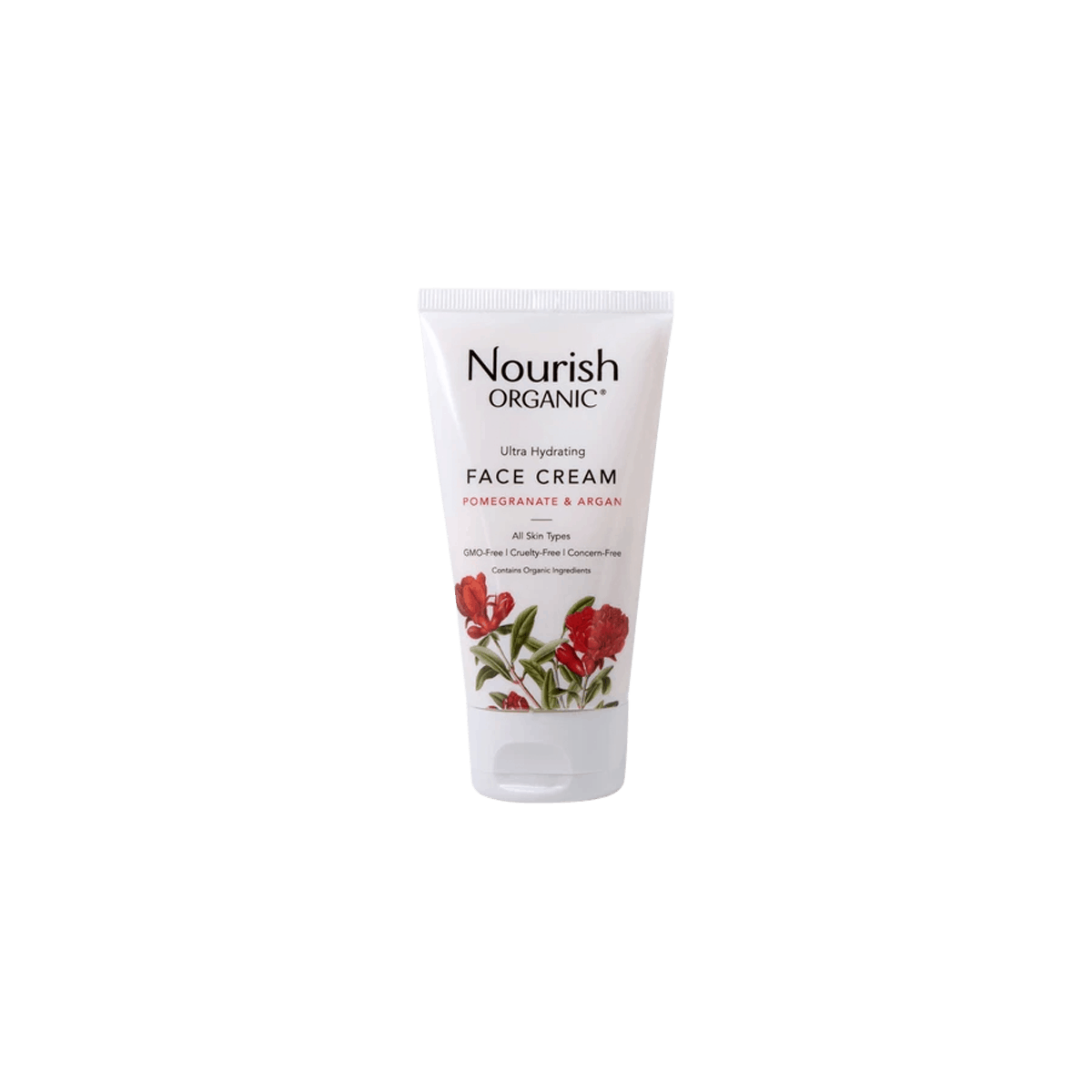
Containing mostly organic ingredients, it’s no surprise that this moisturizer tops our list based on its ingredients. Nourish Organic’s Ultra Hydrating Face Cream is rich without feeling overwhelming, thanks to its fast-absorbing qualities. A combination of its organic ingredients, such as Moroccan argan oil and pomegranate seed oil, hydrates the skin while leaving a light scent.
The only “iffy” ingredient in our favorite moisturizer is denatured SD-Alcohol 38 (also known as ethanol), which is known to be a penetration enhancer. In other words, it increases the skin absorption of other ingredients. However, without other ingredients of concern, this is not a concern.
Denatured SD-Alcohol 38 (also known as ethanol) is known to be a penetration enhancer, increasing the skin absorption of other ingredients. In the absence of other ingredients of concern, this is not dangerous.
Ingredients
Potential irritants: 1*
Clean Moisturizers Rated: Good
The Outset
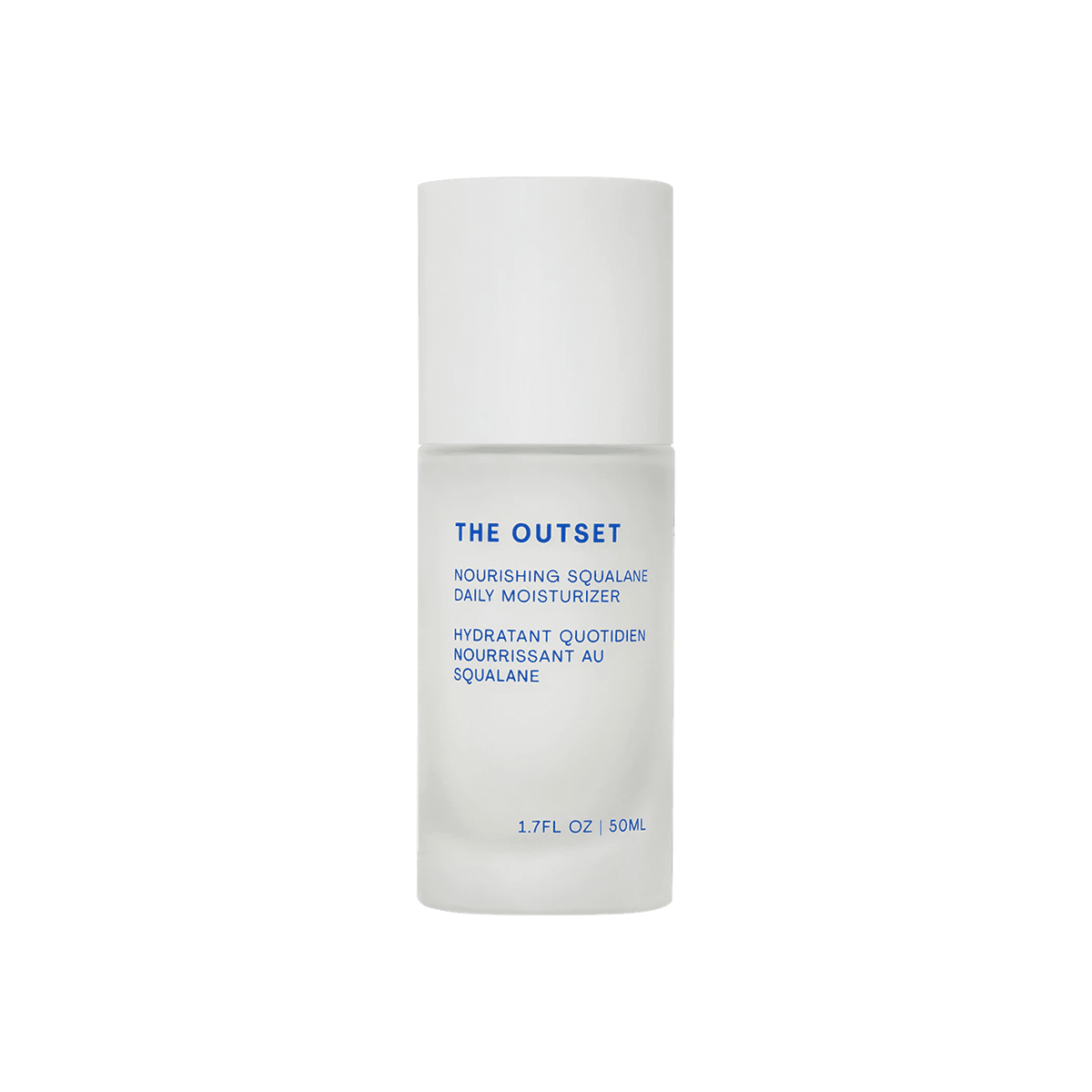
The Outset’s daily moisturizer uses a combination of clean and natural moisturizing ingredients in the formula. Like all products from the brand, it’s fragrance-free and vegan, and contains no ingredients we recommend avoiding.
Pentylene glycol has shown evidence of being an irritant. Studies show that it can cause contact dermatitis, which indicates that Pentylene Glycol is a sensitizing ingredient and can be considered as an allergen. (source)
Phenoxyethanol is a common preservative. Typically, this ingredient is considered safe in products not meant for babies. An EU study found skin irritation in animal studies even when exposed to very low amounts. (source)
There is some concern that tocopheryl acetate is at risk of being contaminated with hydroquinone, a known human carcinogen. While we believe this risk to be small, we consider tocopheryl acetate an iffy ingredient. (source)
Sodium benzoate is a chemical preservative. Reports show that people with sensitive skin should not use products which contain sodium benzoate as it may induce contact allergy. (source)
Ingredients
The Outset

Clean and safe vegan ingredients make up the formulation of this night cream. You’ll find niacinamide and backuchiol in the ingredients list, both of which are trendy skincare ingredients from natural sources.
Pentylene glycol has shown evidence of being an irritant. Studies show that it can cause contact dermatitis, which indicates that Pentylene Glycol is a sensitizing ingredient and can be considered as an allergen. (source)
Phenoxyethanol is a common preservative. Typically, this ingredient is considered safe in products not meant for babies. An EU study found skin irritation in animal studies even when exposed to very low amounts. (source)
There is some concern that tocopheryl acetate is at risk of being contaminated with hydroquinone, a known human carcinogen. While we believe this risk to be small, we consider tocopheryl acetate an iffy ingredient. (source)
Ingredients
Weleda
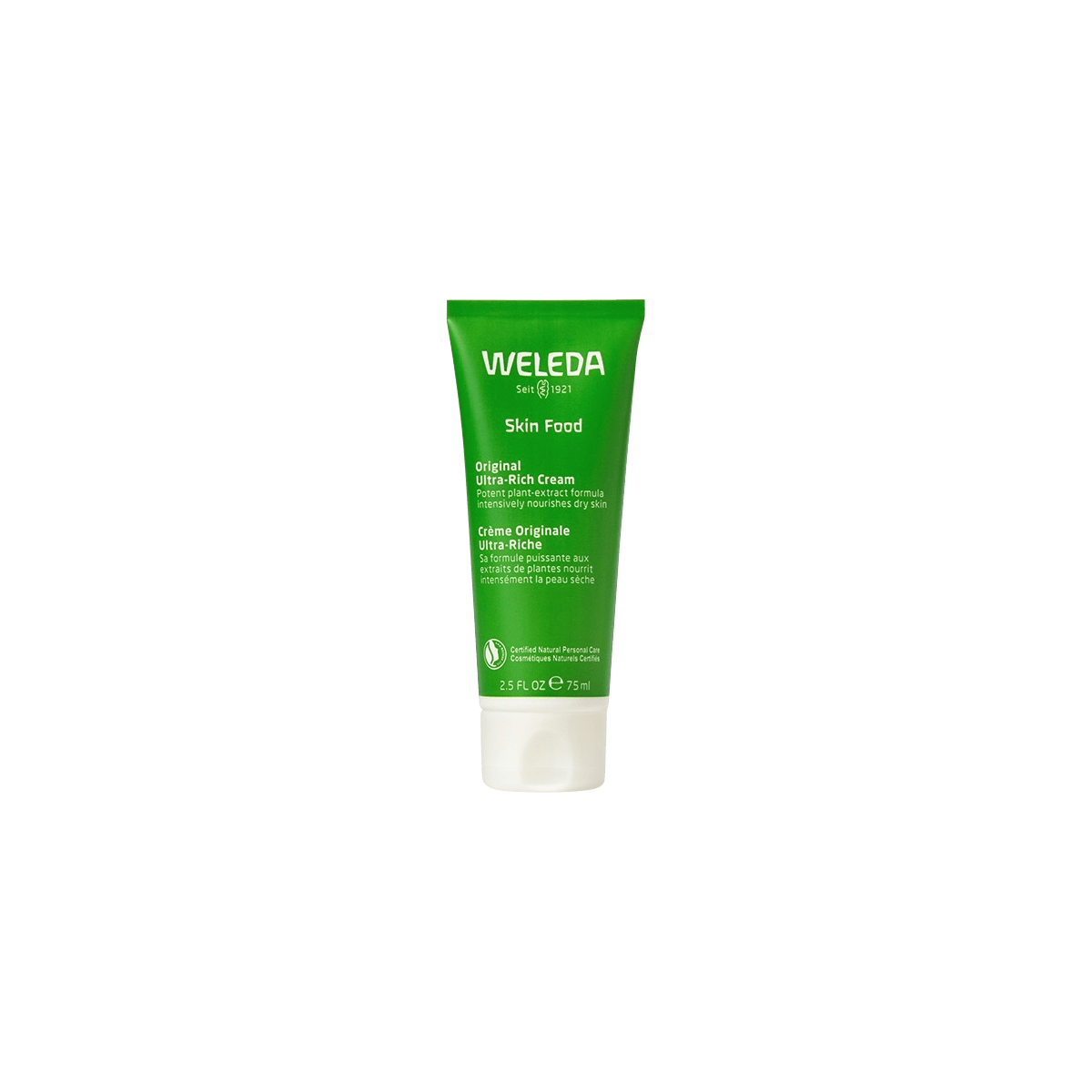
The aptly-named Skin Food by Weleda is a rich, thick cream that feeds your dry skin with nourishing plant oils, lanolin, beeswax, and more. As an intense moisturizer, don’t expect harsh scents – instead, you’ll get a unique blend of natural orange, lavender, and vanilla notes.
If you have sensitive skin, there are essential oils included in its ingredients list that are recognized as human allergens. This product also contains sweet almond oil, which is not suitable for those with a nut allergy.
Ingredients
Potential irritants: 6*
Drunk Elephant

For a moisturizer that does more of what it’s asked for, take a look at Drunk Elephant’s Protini™ Polypeptide Cream. In addition to moisturizing the skin, its formula reduces the appearance of lines, wrinkles, and signs of sun damage, for revived and younger-looking skin. Its main ingredient – signal peptide complex – are made up of amino acids, which form proteins in the skin to plump, firm, and restore bounce.
Note that this product contains polysorbate 60, which can become a potential human carcinogen when contaminated with ethylene oxide and 1,4-dioxane. Preservatives are also included, specifically phenoxyethanol and sodium benzoate, which are safe but may affect those with sensitive skin.
Ingredients
Potential irritants: 4*
RMS Beauty

Believe it or not, but there is a moisturizer out there that contains only one, pure ingredient. RMS Beauty’s Raw Coconut Cream is made up of 100% raw and unrefined organic coconut oil. This multitasking cream can remove the most stubborn of makeup, as well as moisturize the face and body. Without using heat or chemical solvents to extract the coconut oil, the result is a natural moisturizer that helps soften and soothe the skin.
Although going completely natural can be a positive thing, coconut oil may cause breakouts for acne-prone skin. If you are one to have skin blemishes, it’s recommended to avoid products with this ingredient.
Ingredients
Ursa Major
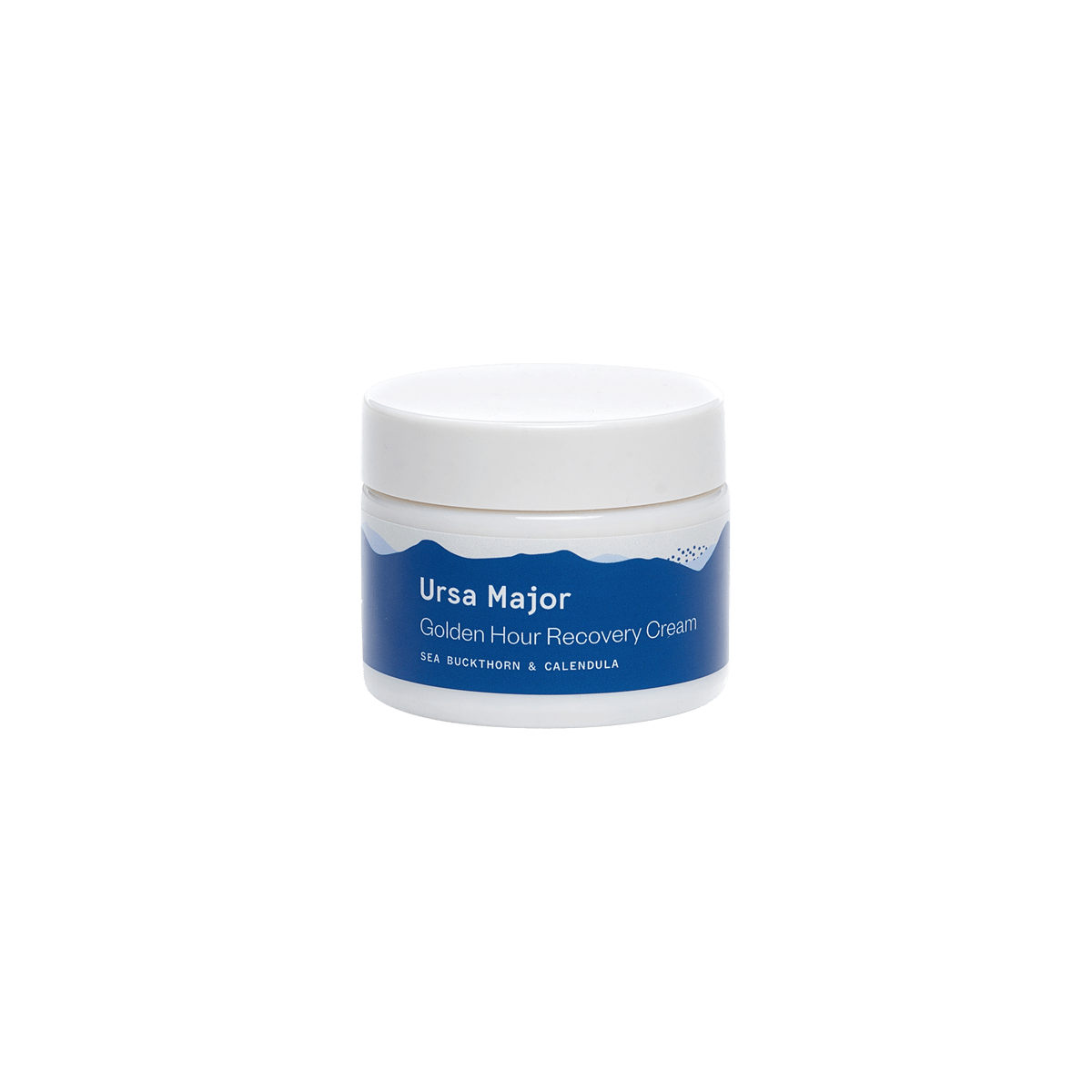
Are you having trouble finding a cream that works for your dry, sensitive or neglected skin? Golden Hour Recover Cream from Ursa Major is a fast-absorbing face cream that you can slather on when your skin is craving moisture. With sea buckthorn that’s rich in antioxidants and omega fatty acids, and sunflower to help skin retain moisture, you won’t find any of the cheap and impractical ingredients.
For its aroma and to help reduce the appearance of redness, the cream has rose flower oil added to its formula. Out of all the ingredients, this is the only one that can sometimes be irritating for some with sensitive skin.
Ingredients
Potential irritants: 1*
Youth to the People
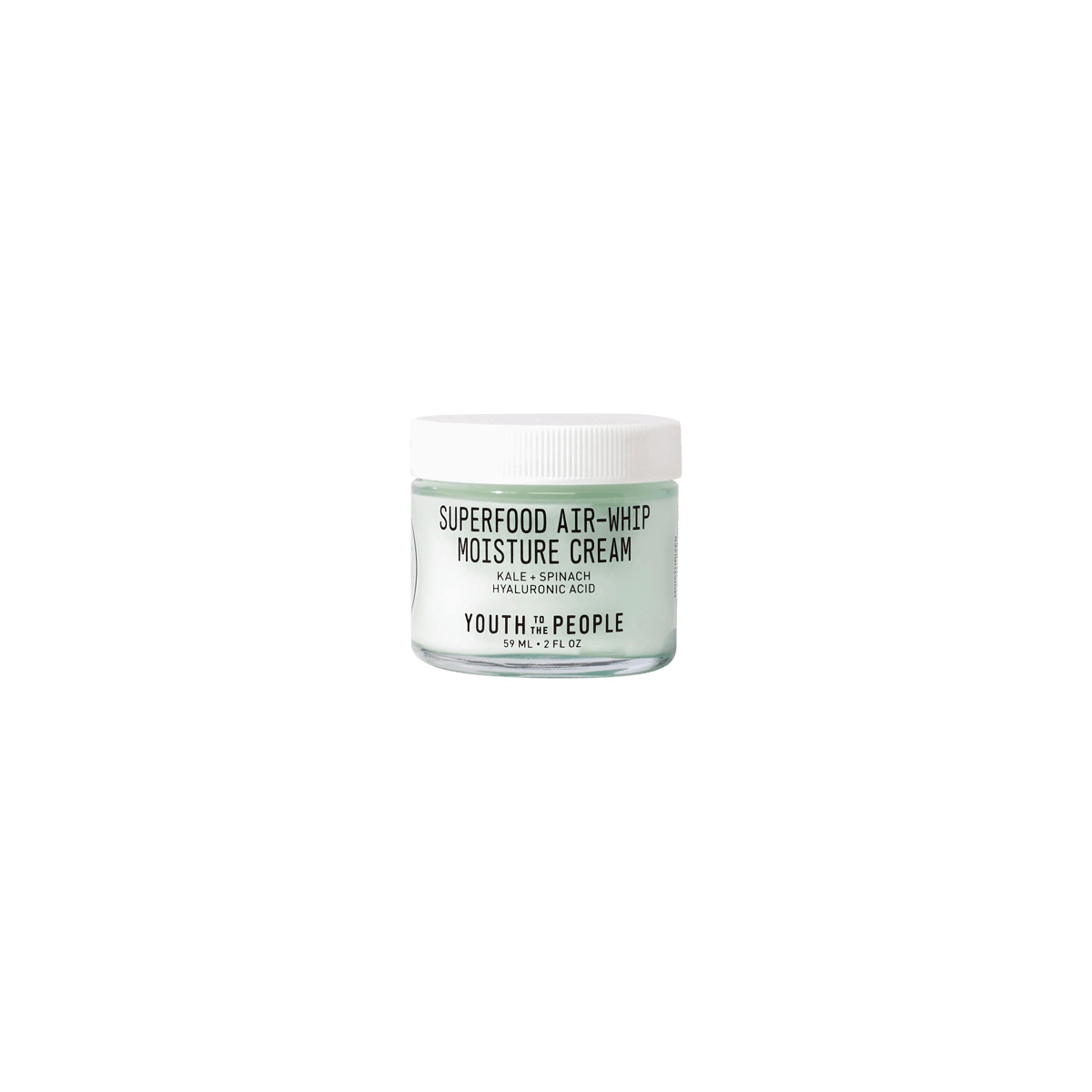
Fun product names tend to get all the attention, but what’s inside of Youth to the People’s Superfood Air-Whip Moisture Cream jar deserves all the focus. Air-whipped to lightweight perfection, this cream is filled with superfoods like kale, spinach, and green tea for all your antioxidant and vitamin needs. This moisturizer absorbs into the skin quick, making suitable to use before applying makeup, or it can be mixed with your go-to foundation for an added boost of hydration.
Pentylene glycol, which is an ingredient in this moisturizer, has shown evidence of being an irritant that can cause contact dermatitis. Other ingredients of concern are ethylhexylglycerin, chemical preservatives (phenoxyethanol and sodium benzoate), and unknown natural fragrance.
Ingredients
Potential irritants: 3*
Acure
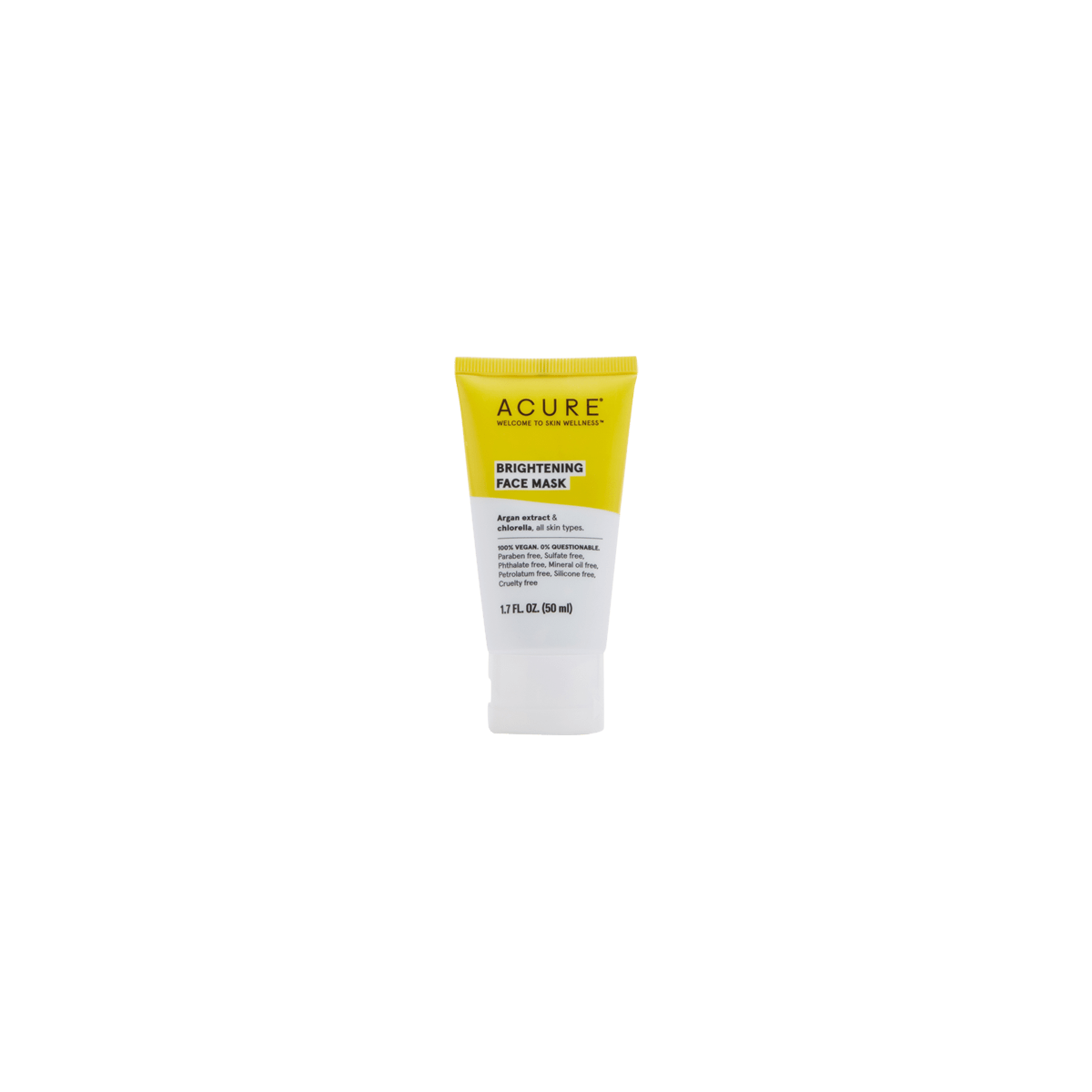
A 2-in-1 solution for dull and dry skin comes in this petite tube from Acure. Their Brightening Day Cream evens out the skin tone to make way for a brighter appearance. With cica and argan oil, as well as pomegranate and blackberry, this cream moisturizes and protects even when a small amount is applied.
Included in its ingredient list is glyceryl laurate – a penetration enhancer, which can be a concern if included with other ingredients that are unsafe. Other ingredients are tocopheryl acetate, which has been linked to a possible increase of photocarcinogenesis (skin cancer), and clove oil, which has shown to be a contact allergen in patch tests.
Ingredients
Potential irritants: 4*
Mineral Fusion
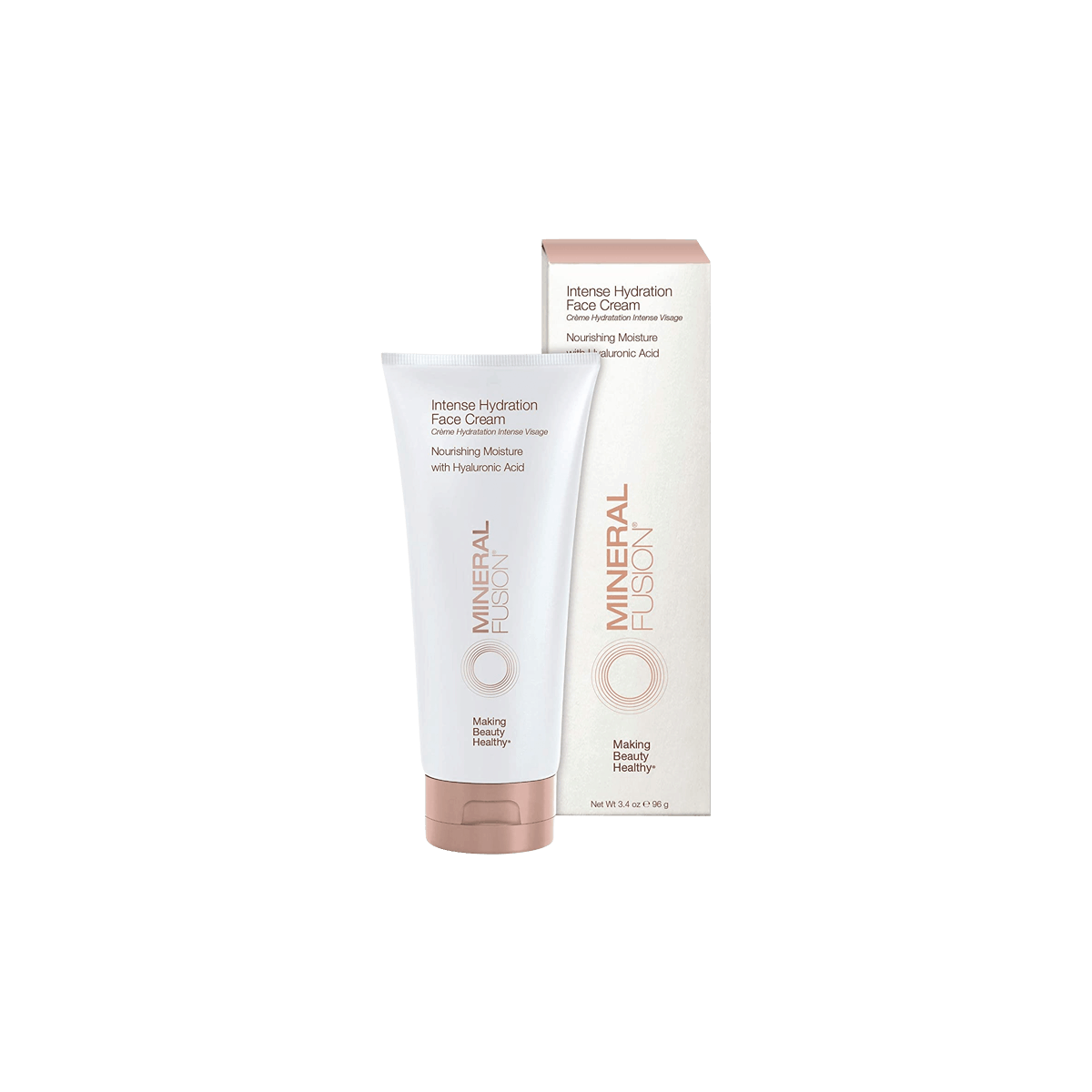
Perfectly plumped skin is possible with the application of the Intense Hydration Face Cream from Mineral Fusion. They’re all about the plump: the concoction of shea butter, rosehip oil, and mineral water was designed to achieve skin that’s full of bounce. Natural antioxidants and soothing ingredients like aloe and cucumber are also added for a glowing and smooth feel.
Apart from the inclusion of a common preservative, phenoxyethanol, this product also has ethylhexylglycerin. This can be a mild skin and eye irritant and should be applied with extra care, especially around the face. While the ingredient list mentions natural fragrance, the exact ingredients are unknown, which may be a concern if you’re prone to skin irritation or allergic reactions.
Ingredients
Potential irritants: 3*
Kiehl’s
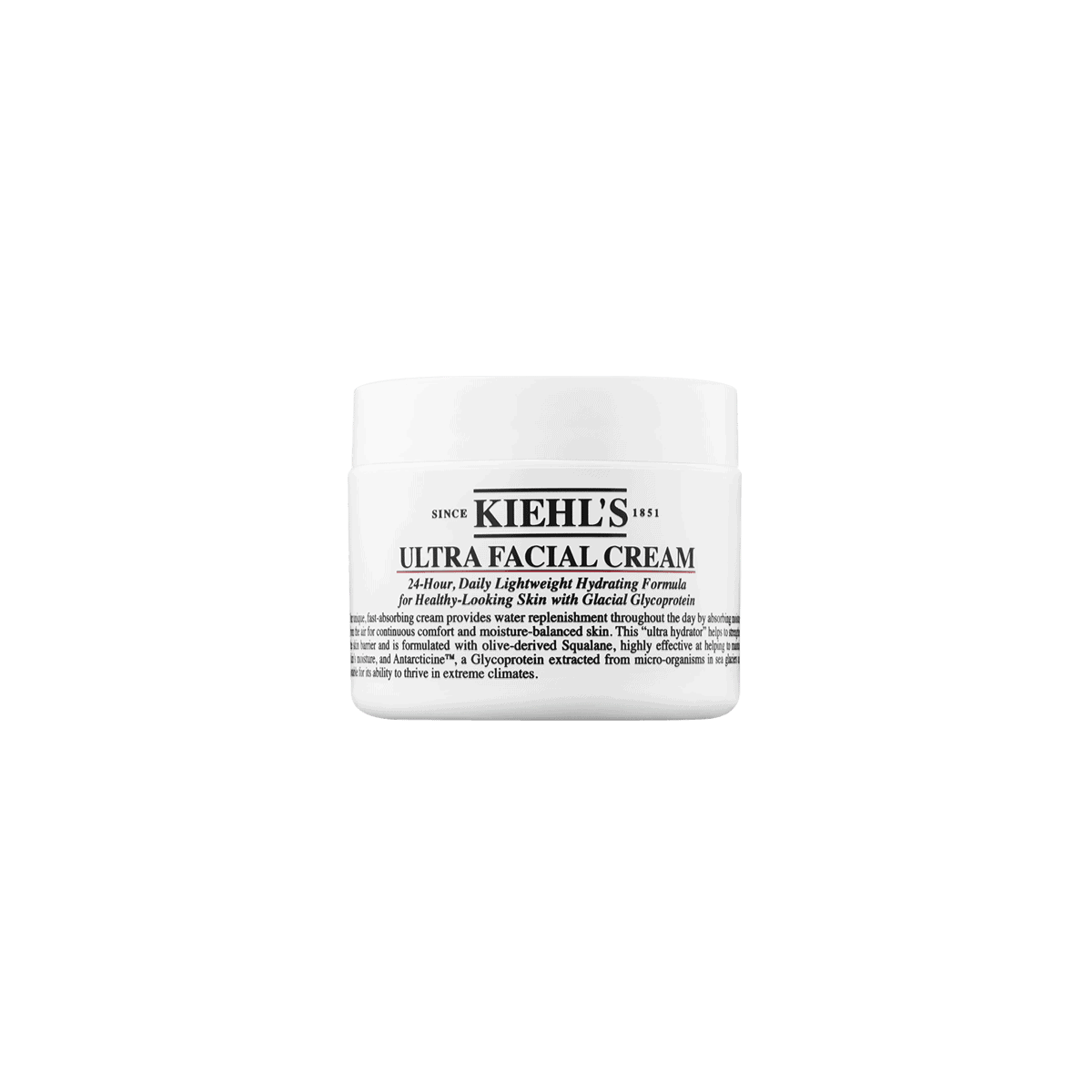
It can be a huge claim to label a product as ‘ultra’, however this face cream Kiehl’s might just be deserving of it. Their Ultra Facial Cream provides all-day hydration and can hydrate your skin’s driest areas with 2.3 times more hydration. With glacial glycoprotein extract and squalene, this lightweight cream is your best friend when living in cold conditions, as it replenishes your skin’s natural barrier. Avocado oil, apricot kernel oil, rice bran oil, and other natural ingredients are also added to provide a smooth and soft skin feel.
Potentially concerning ingredients include a few common preservatives; stearate (PEG-8), a known human carcinogen when contaminated with other ingredients; and sweet almond oil, which is not suitable for someone with a nut allergy.
Ingredients
Potential irritants: 4*
Andalou Naturals
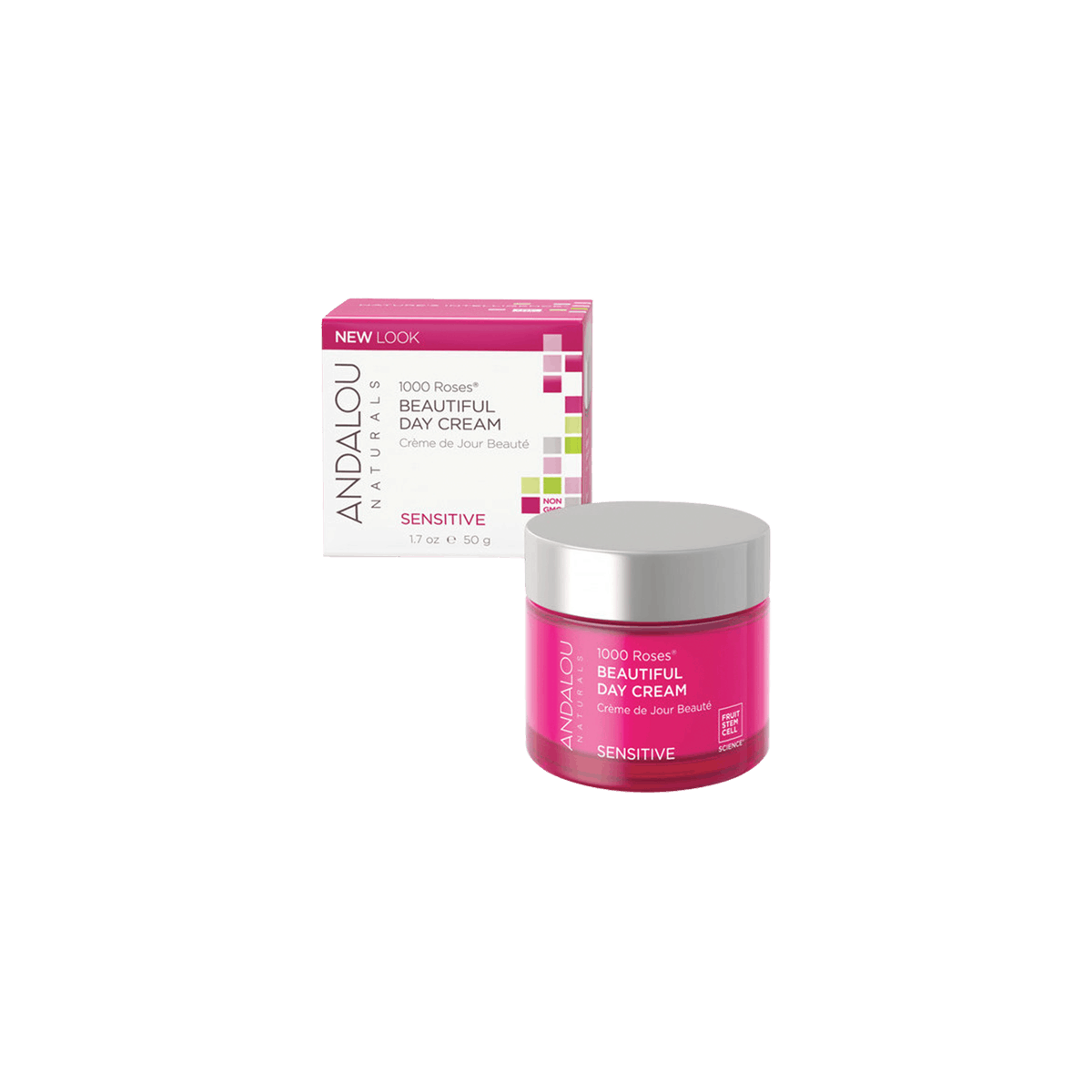
Starting the day off with a lather of this Andalou Naturals cream may as well be like having a bunch of roses to greet you good morning. The 1000 Roses Beautiful Day Cream for sensitive skin features a key ingredient, alpine rose stem cells, for hydration and vitality to nourish and soothe. Other equally beneficial ingredients include pomegranate to tone and aloe vera to revive the skin’s hydro lipid barrier. You won’t have to worry about that greasy texture after applying this on, and expect a gentle and light feel instead.
Potential irritant in this product is ethylhexylglycerin, which can be irritating on the eyes and skin when not applied carefully.
Ingredients
Potential irritants: 3*
Pai Skincare
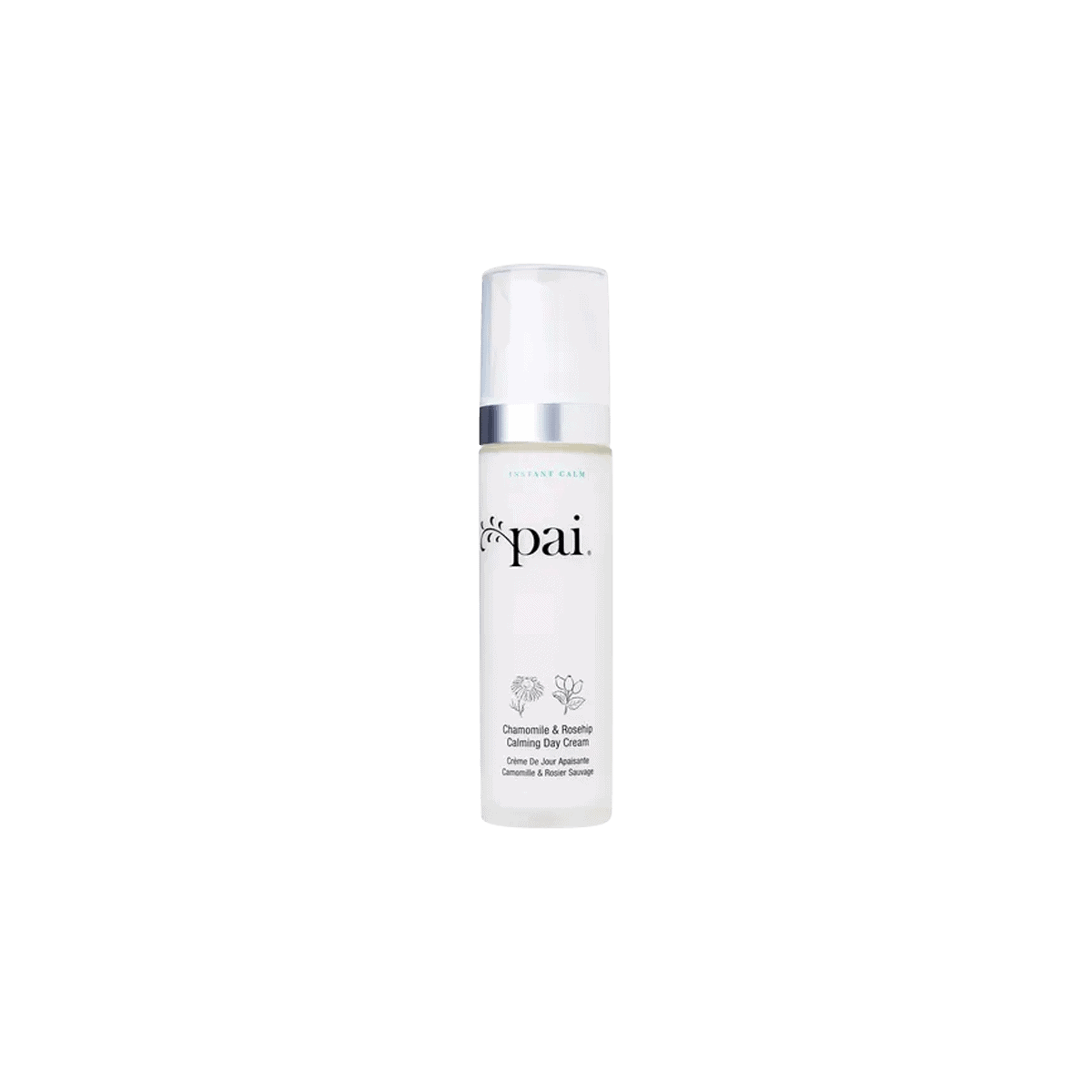
It’s not easy to find the right moisturizer for sensitive skin, but if you do, you would want to hold it close to your heart. Pai Skincare’s Chamomile and Rosehip Calming Day Cream was designed for the sensitive skin in mind, including eczema and rosacea-prone skin. Using the CO2 extracts of organic chamomile and rosehip, this cream is all about its soothing properties to calm flare-ups, redness, and irritation.
Rosehip oil contains lactic acid, which can cause skin irritation in some people.
Ingredients
Potential irritants: 3*
Derma E
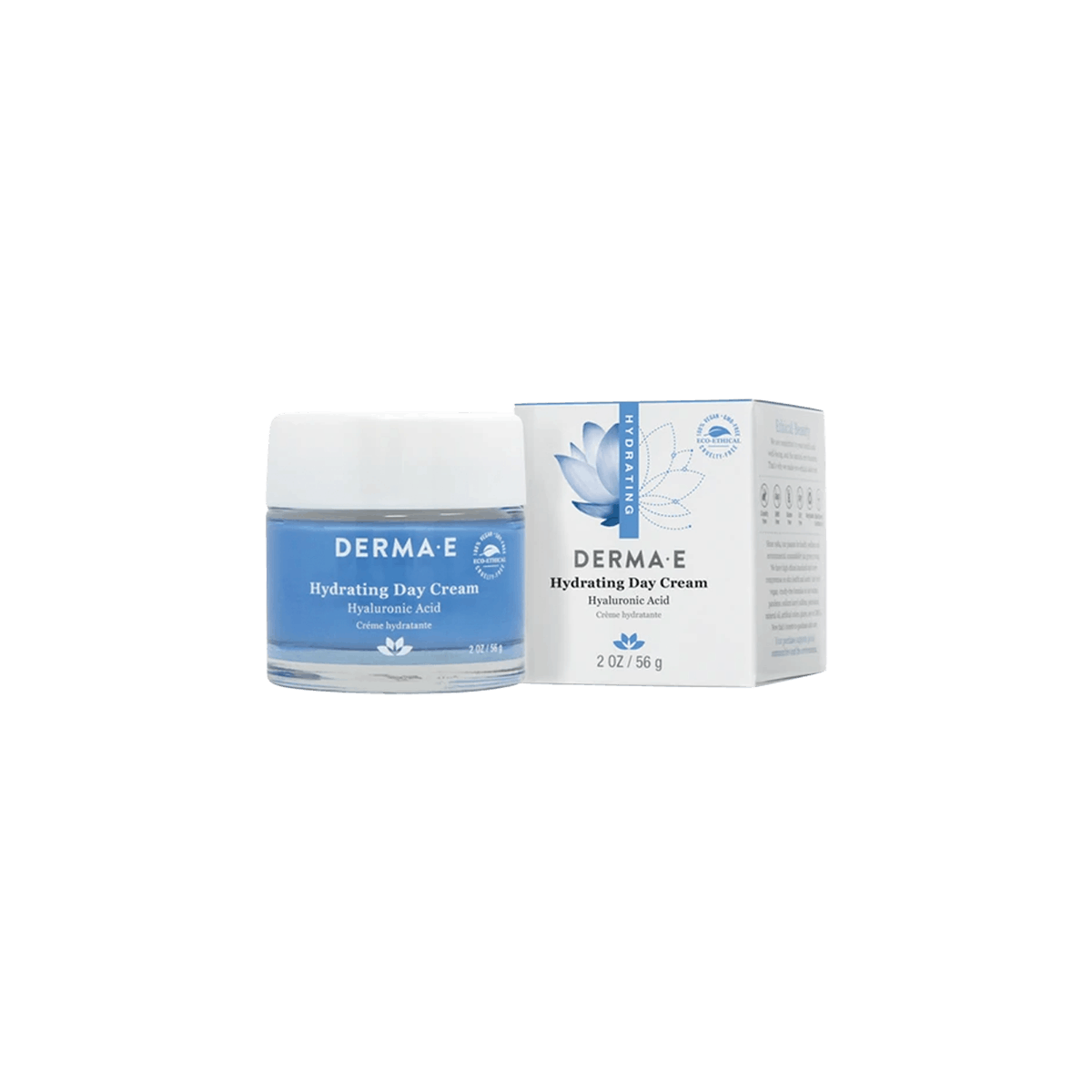
When a cream mentions hyaluronic acid on its packaging label, you know it’s a good sign. Derma E’s Hydrating Day Cream has this key ingredient, which acts as a thirst quencher for the skin, leaving long-lasting moisture. In addition to having nature’s ‘moisture magnet’, this cream also contains vitamin C-Ester, which plumps to reduce fine lines and wrinkles to keep you youthful-looking.
With all its benefits, this product tocopheryl acetate, which is at risk of being contaminated with hydroquinone – a human carcinogen. Fortunately, the risk is small, but it’s still something to look out for. Other concerning ingredients are phenoxyethanol, ethylhexylglycerin, and natural fragrance.
Ingredients
Potential irritants: 1*
OSEA
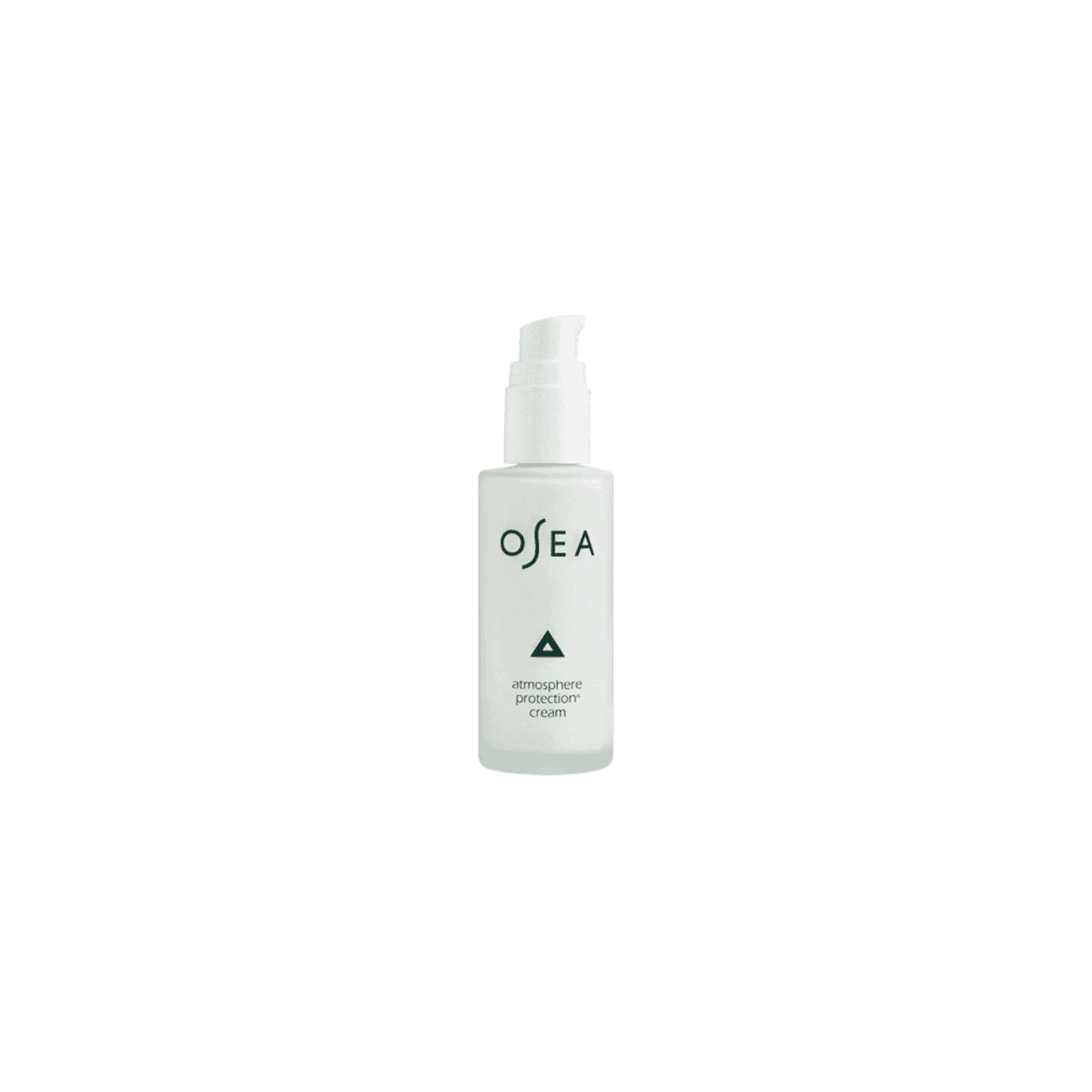
Protect your skin from environmental pollutants and moisturize it at the same time with Osea’s Atmosphere Protection Cream. It’s light enough to use under sunscreen or makeup, making it the perfect everyday moisturizer. Although this California-made cream is filled with seaweed, shea butter, and omega-rich oils, the formula is neither sticky or oily. It will also dry quickly, which is suitable to apply just before bed and before you head out the door.
Grapefruit peel oil can be found in a bottle of this cream, which is composed of several terpenes including limonene, geraniol, and linalool. Terpenes are aromatic compounds found in plants, and are often associated with contact dermatitis.
Ingredients
Potential irritants: 1*
Everyone
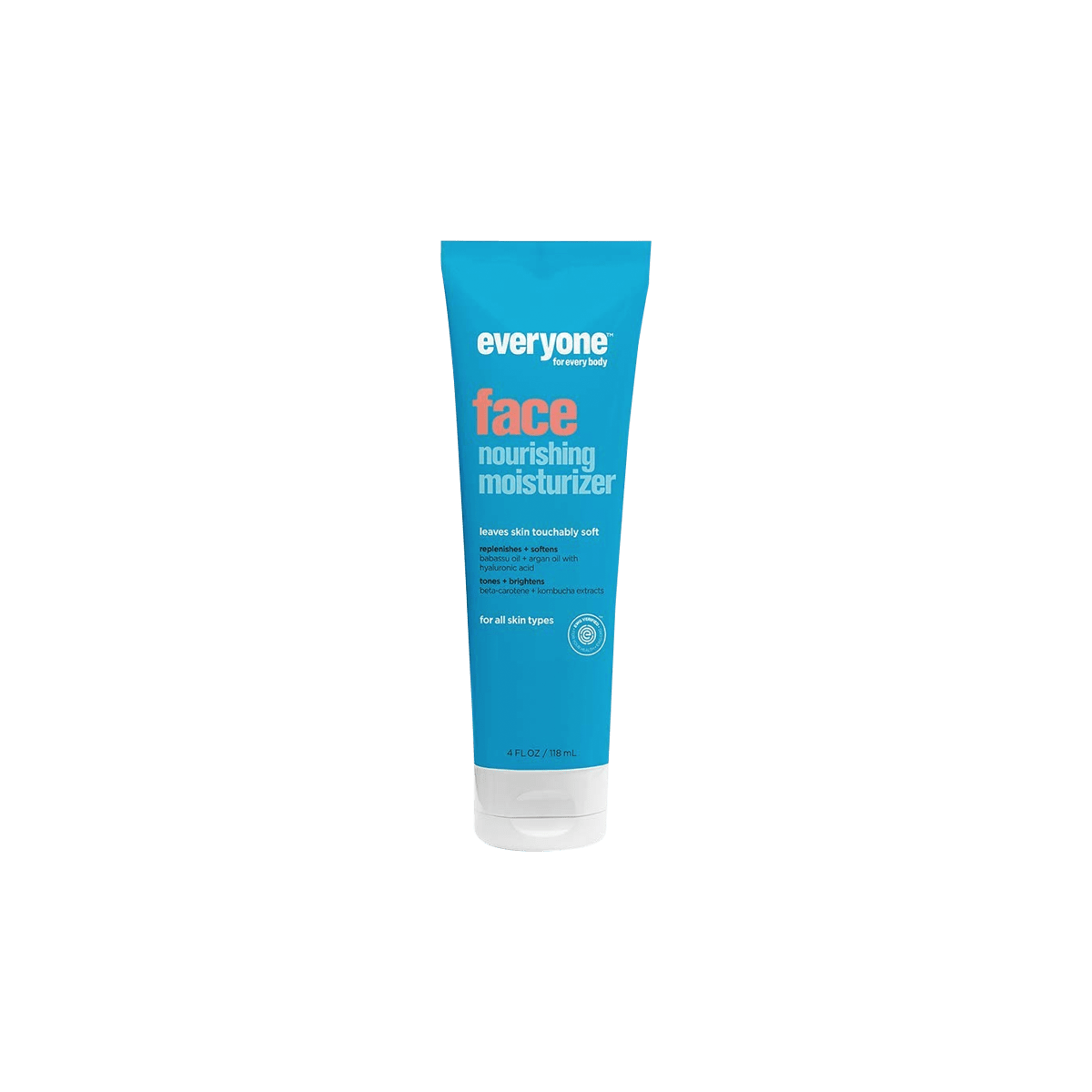
Editor’s Note: As of April 2021, this product appears to be discontinued.
Natural ingredients? Check. Cruelty free? Double check. For an all-round clean and good moisturizer, this one from Everyone may be for you. It’s also synthetic fragrance-free, so you won’t get any of that painfully obvious fake scents. The Nourishing Face Moisturizer has a mild hypoallergenic formula that replenishes and softens using argan oil, hyaluronic acid, and kombucha extracts.
Unfortunately, this product has dimethicone – a petroleum-derived ingredient in the silicones family. While silicones can make the skin feel hydrated, it can also trap debris in the pores, which causes acne and congestion. Other ingredients to note are phenoxyethanol and ethylhexylglycerin.
Ingredients
Potential irritants: 2*
Clean Moisturizers Rated: Iffy
Sukin
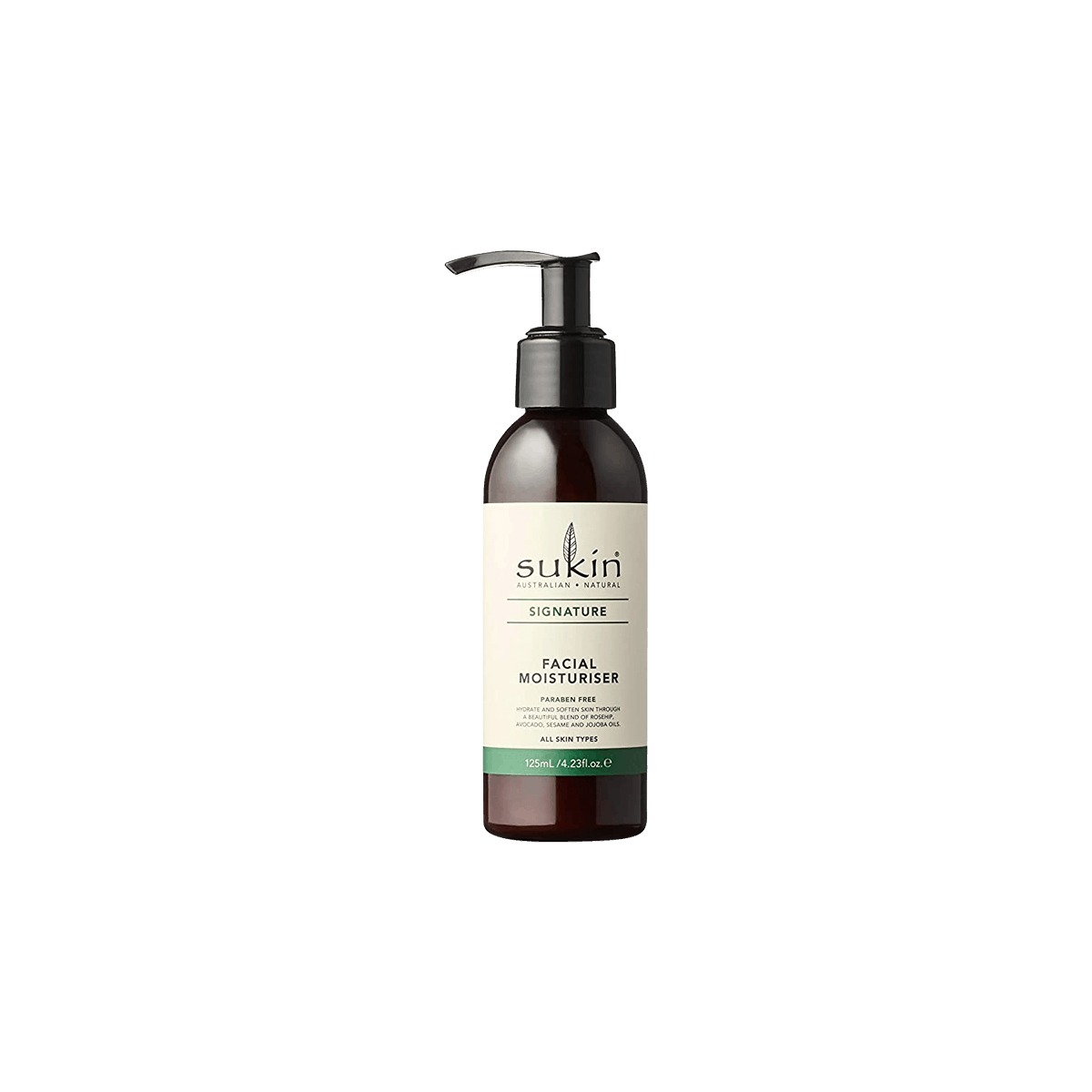
Ceteareth-20 is an ethoxylated ingredient, meaning it can be contaminated with 1,4-dioxane, a known human carcinogen. (source)
Phenoxyethanol is a common preservative. Typically, this ingredient is considered safe in products not meant for babies. An EU study found skin irritation in animal studies even when exposed to very low amounts. (source)
Benzyl alcohol is listed by the The European Union’s Scientific Committee on Consumer Safety (SCCS) as a well-recognized consumer allergen. (source)
Ingredients
Potential irritants: 6*
La Mer
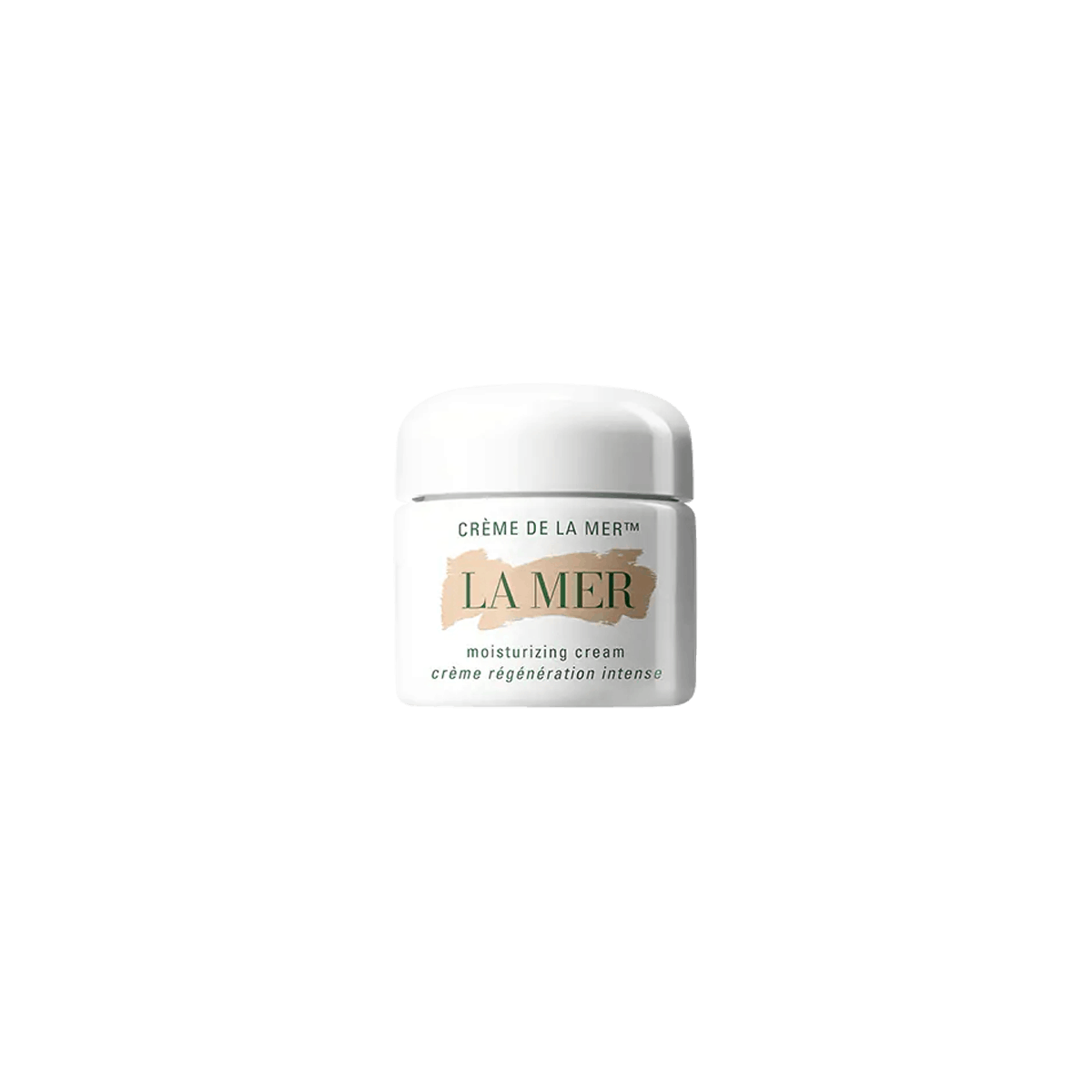
Citronellol is naturally occurring but can also be made synthetically. This ingredient falls into the list of allergens under the EU legislation. It may cause pigmentary anomalies, known as melanosis faciei feminae. This ingredient may also cause contact allergy. (source)
Benzyl Salicylate has a potential of developmental toxicity at specified high concentrations. (source)
Sodium benzoate is a chemical preservative. Reports show that people with sensitive skin should not use products which contain sodium benzoate as it may induce contact allergy. (source)
The ingredient “fragrance” means that there is a mixture of several essential oils or synthetic or natural chemicals that makeup the scent of the product. According to European and US legislation, the ingredients of the fragrance do not have to be revealed on the product’s ingredients list. Because these ingredients are not disclosed, we always consider this a “bad” ingredient.
Ingredients
Potential irritants: 7*
Clean Moisturizers Rated: Avoid
L’Oréal Paris
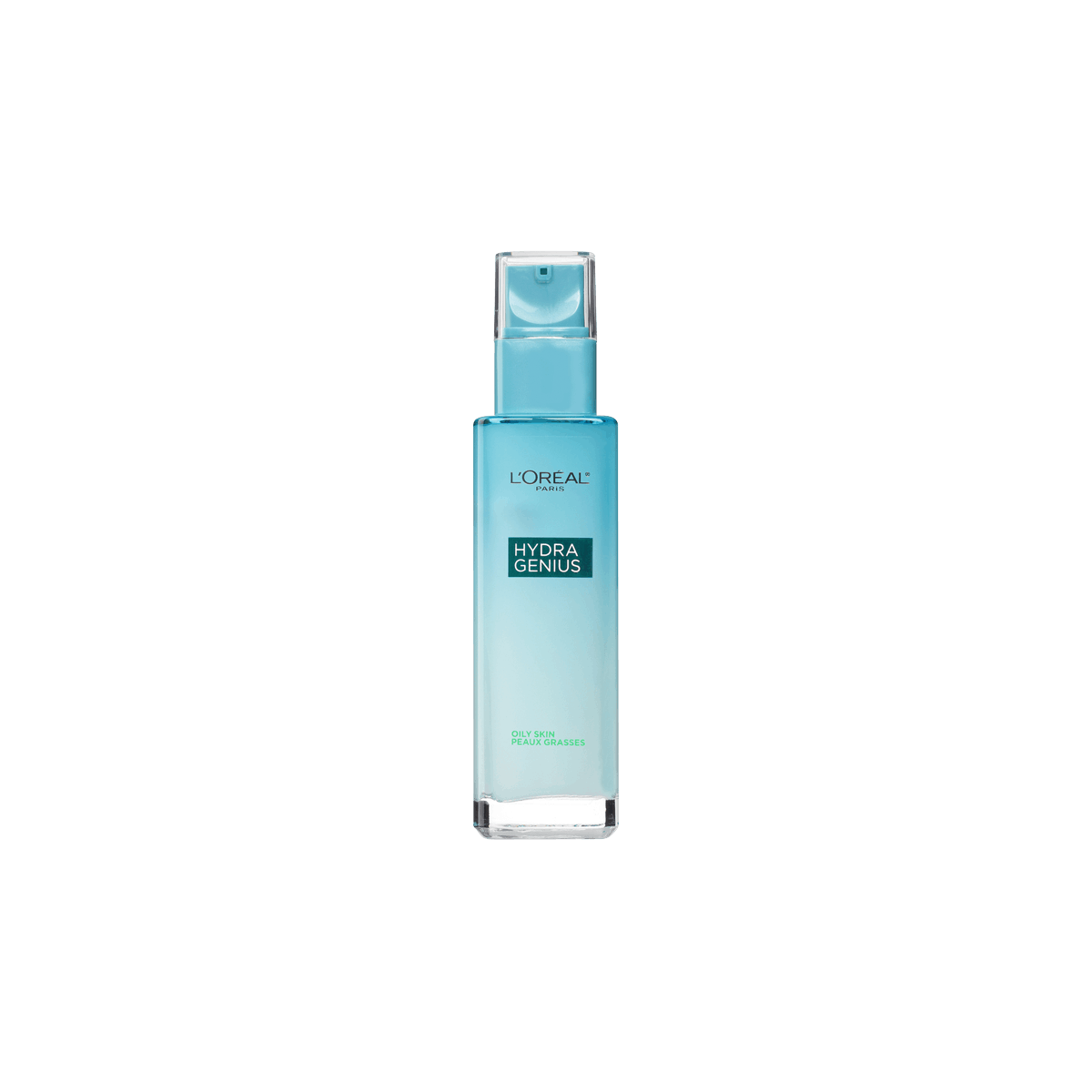
This product has dimethicone, a petroleum-derived ingredient in the silicones family. Silicone makes the skin feel like it’s being hydrated, but it’s simply a short-term effect. Silicones can trap debris in the pores, cause acne and congestion, and can accumulate on the skin.
Triethanolamine (TEA) has been shown to be carcinogenic in animal studies. (source)
This product contains one or more parabens. These are preservative linked to endocrine disruption and is associated with the proliferation of breast cancer cells. (link)
Ingredients
Potential irritants: 8*
CeraVe

Homosalate is a chemical sunscreen linked with endocrine disruption, organ system toxicity, and reproductive organ disruption in both males and females. (source)
Octinoxate is a chemical sunscreen linked with endocrine disruption, organ system toxicity, and reproductive organ disruption in both males and females. (source)
Octocrylene is a chemical sunscreen linked with endocrine disruption, organ system toxicity, and reproductive organ disruption in both males and females. (source)
A study found a link between behentrimonium methosulfate and possible reproductive toxicity in mice. (source)
This product has dimethicone, a petroleum-derived ingredient in the silicones family. Silicone makes the skin feel like it’s being hydrated, but it’s simply a short-term effect. Silicones can trap debris in the pores, cause acne and congestion, and can accumulate on the skin.
This product contains one or more parabens. These are preservative linked to endocrine disruption and is associated with the proliferation of breast cancer cells. (link)
Ingredients
Potential irritants: 1*
Embryolisse
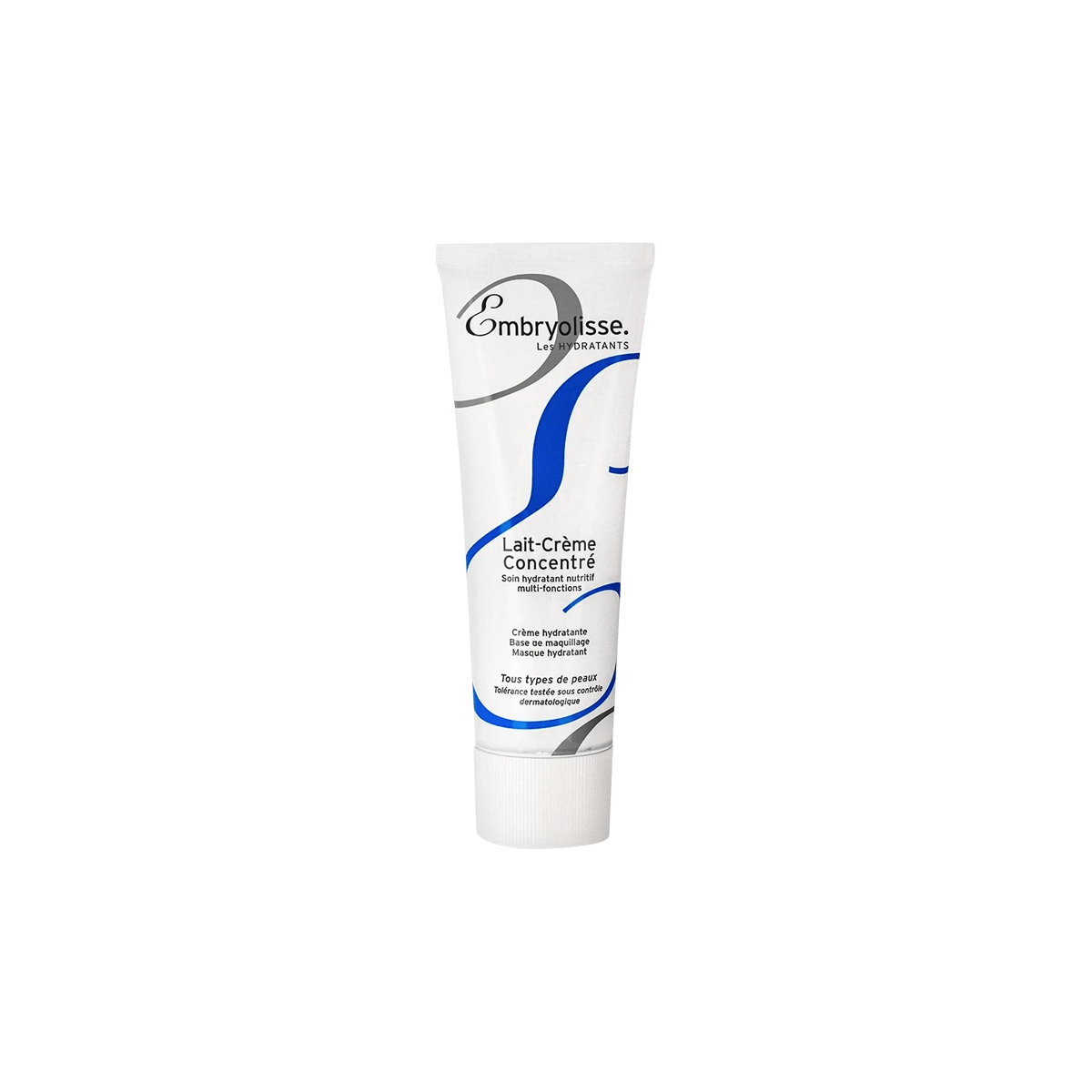
Triethanolamine (TEA) has been shown to be carcinogenic in animal studies. (source)
Steareth-10, an ethoxylate, can be contaminated with 1,4-dioxane, a human carcinogen. (source)
Polyacrylamide is controversial because acrylamide, which is a decomposition residue of polyacrylamide, is a demonstrated neurotoxin in humans and a carcinogen in animal tests. Acrylamide is banned in the EU. (link)
Perfume is a blanket term that hides the exact chemical makeup of the fragrance used in this product. We never recommend products that have chemical fragrance: read here for a full explanation.
Laureth-7 can be contaminated with ethylene oxide, a likely human carcinogen. (source)
Propylene glycol acts as a penetration enhancer, increasing skin absorbtion of other ingredients in a product. When none of the other ingredients in a product is potentially dangerous, this isn’t a concern. (source)
Ingredients
Potential irritants: 2*
Clinique
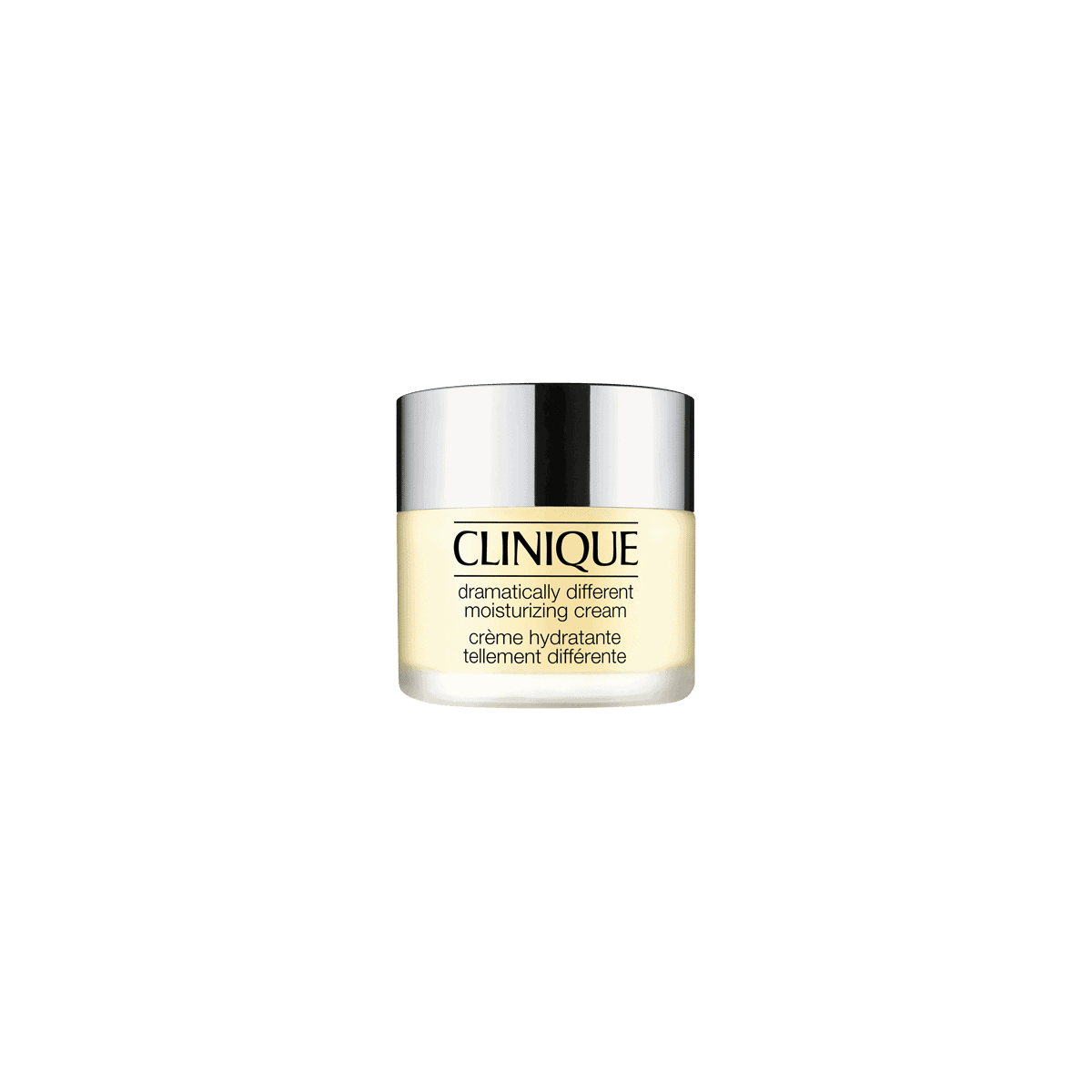
This product has dimethicone, a petroleum-derived ingredient in the silicones family. Silicone makes the skin feel like it’s being hydrated, but it’s simply a short-term effect. Silicones can trap debris in the pores, cause acne and congestion, and can accumulate on the skin.
PEG-100 Stearate can be contaminated with 1,4-dioxane and ethylene oxide, a possible human carcinogen and known human carcinogen respectively.
Phenoxyethanol is a common preservative. Typically, this ingredient is considered safe in products not meant for babies. An EU study found skin irritation in animal studies even when exposed to very low amounts. (source)
Ingredients
Potential irritants: 2*
Aveeno
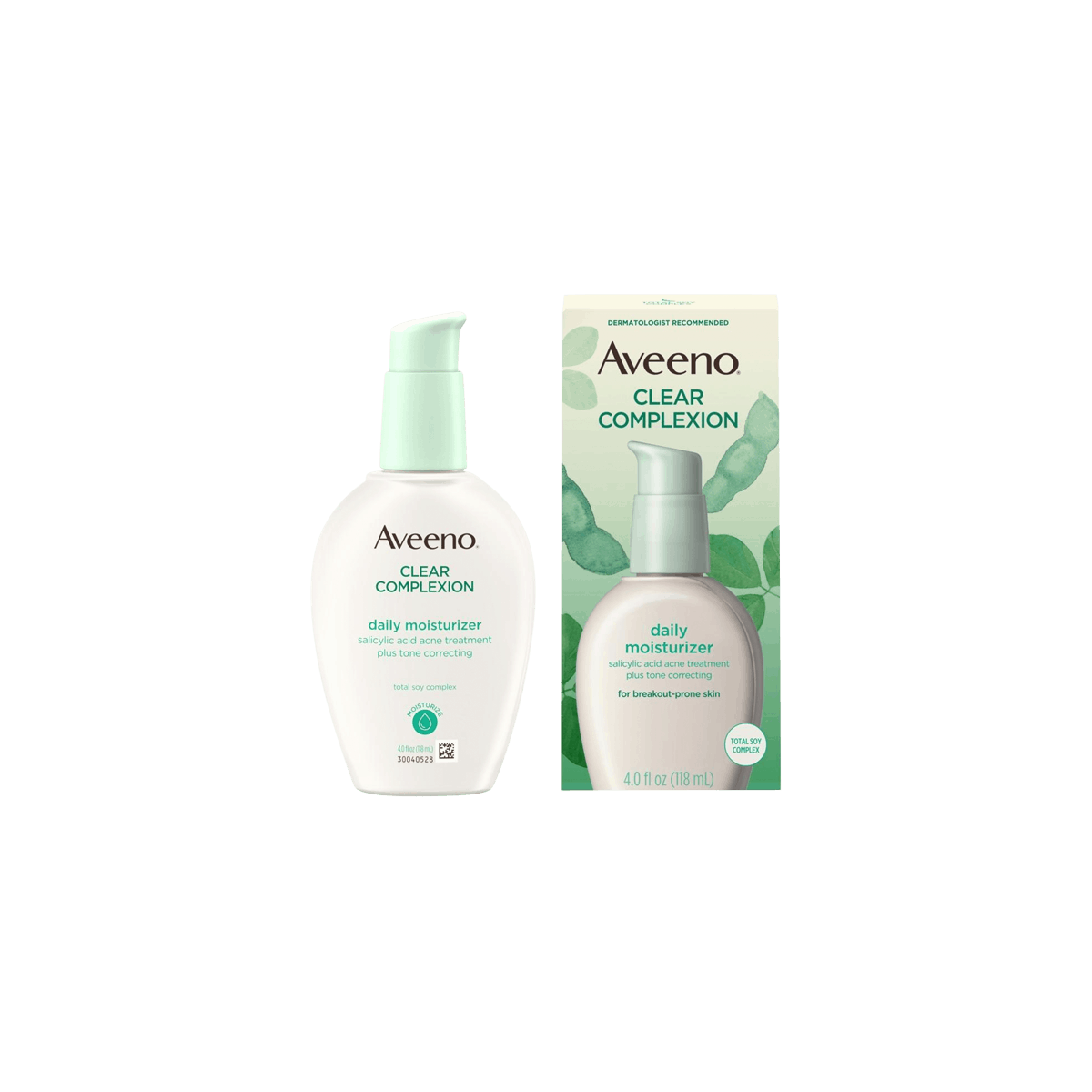
This product has dimethicone, a petroleum-derived ingredient in the silicones family. Silicone makes the skin feel like it’s being hydrated, but it’s simply a short-term effect. Silicones can trap debris in the pores, cause acne and congestion, and can accumulate on the skin.
Isoceteth-20 can be contaminated with ethylene oxide and 1,4-dioxane, possible human carcinogens.
Polyacrylamide is controversial because acrylamide, which is a decomposition residue of polyacrylamide, is a demonstrated neurotoxin in humans and a carcinogen in animal tests. Acrylamide is banned in the EU. (link)
The ingredient “fragrance” means that there is a mixture of several essential oils or synthetic or natural chemicals that makeup the scent of the product. According to European and US legislation, the ingredients of the fragrance do not have to be revealed on the product’s ingredients list. Because these ingredients are not disclosed, we always consider this a “bad” ingredient.
Laureth-7 can be contaminated with ethylene oxide, a likely human carcinogen. (source)
Ingredients
Potential irritants: 2*
Neutrogena
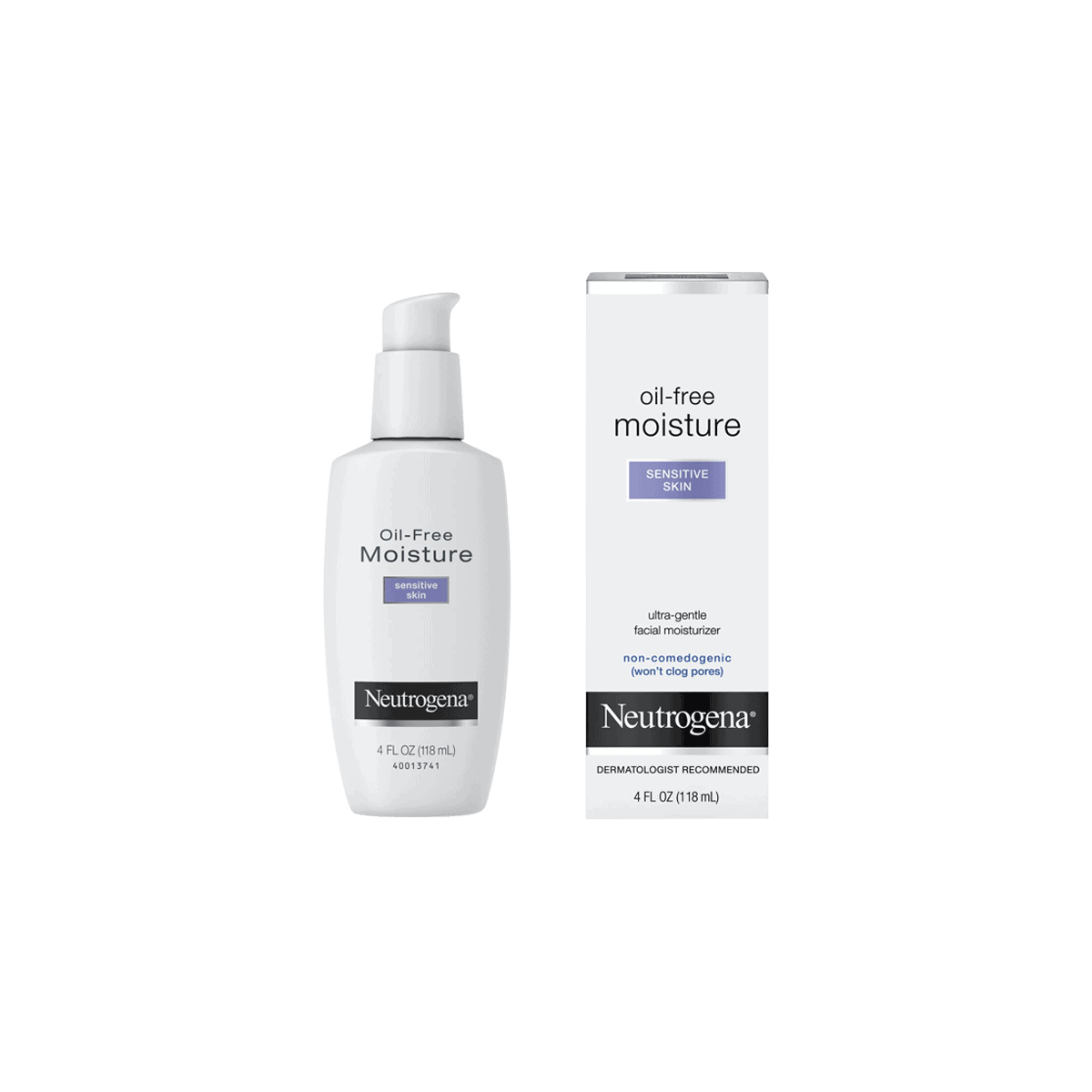
This product has dimethicone, a petroleum-derived ingredient in the silicones family. Silicone makes the skin feel like it’s being hydrated, but it’s simply a short-term effect. Silicones can trap debris in the pores, cause acne and congestion, and can accumulate on the skin.
Cyclomethicone is linked to several adverse health effects., including being found to interfere with ovulation in animal studies. (source)
PEG-10 Soy Sterol, being an ethoxylated ingredient, is at risk of being contaminated with 1,4-dioxane. (source)
PEG-100 Stearate can be contaminated with 1,4-dioxane and ethylene oxide, a possible human carcinogen and known human carcinogen respectively.
Diazolidinyl Urea is a formeldahyde-releasing preservative banned for use in cosmetics in Japan and Sweden. (source)
Ingredients
Potential irritants: 2*
Fresh
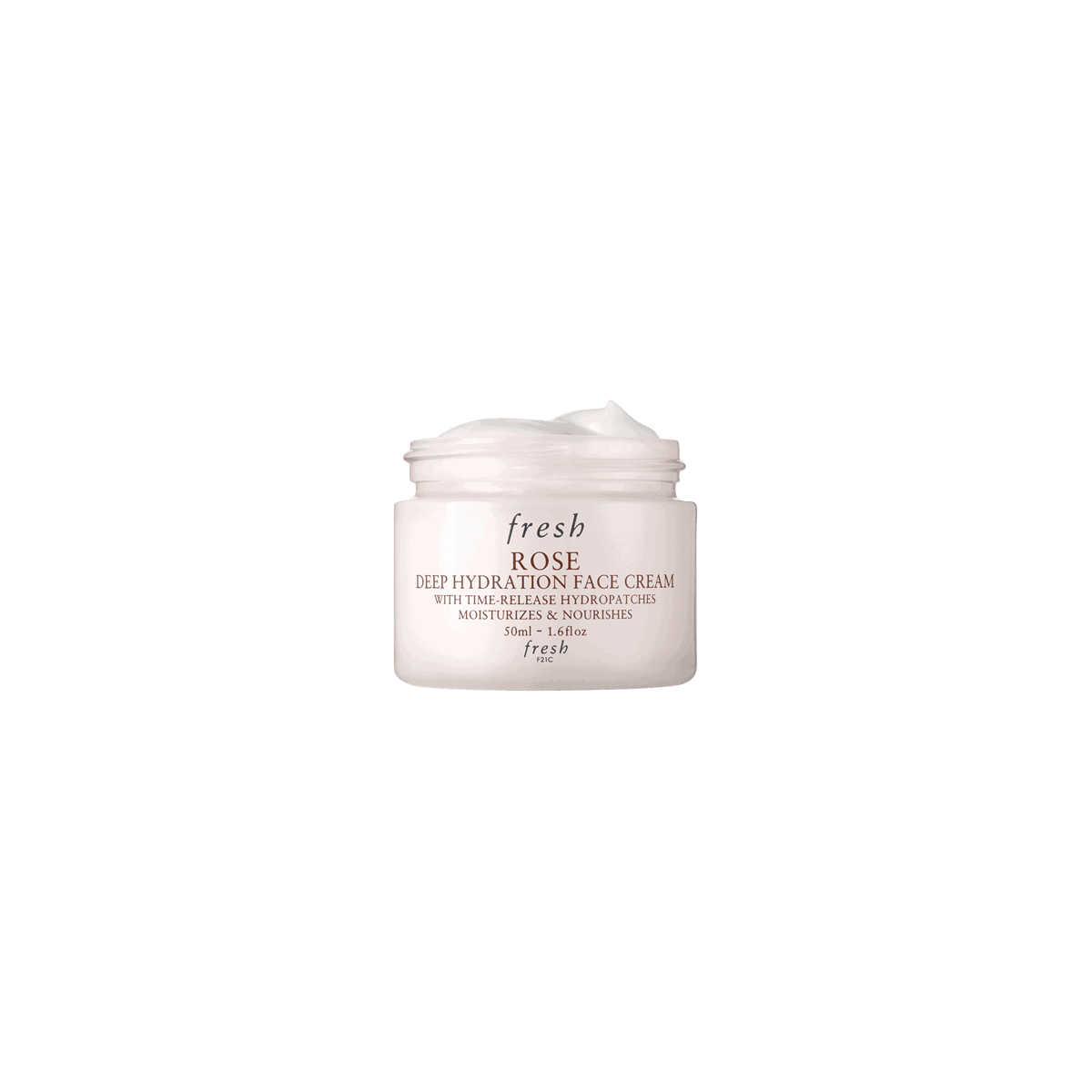
Pentylene glycol has shown evidence of being an irritant. Studies show that it can cause contact dermatitis, which indicates that Pentylene Glycol is a sensitizing ingredient and can be considered as an allergen. (source)
This product has dimethicone, a petroleum-derived ingredient in the silicones family. Silicone makes the skin feel like it’s being hydrated, but it’s simply a short-term effect. Silicones can trap debris in the pores, cause acne and congestion, and can accumulate on the skin.
Steareth-2 is an ethoxylated ingredient. The risk of such ingredients is that 1,4-dioxane—a carcinogen—could be a byproduct of the exhalation process. (source)
There is some concern that tocopheryl acetate is at risk of being contaminated with hydroquinone, a known human carcinogen. While we believe this risk to be small, we consider tocopheryl acetate an iffy ingredient. (source)
Polyacrylamide is controversial because acrylamide, which is a decomposition residue of polyacrylamide, is a demonstrated neurotoxin in humans and a carcinogen in animal tests. Acrylamide is banned in the EU. (link)
Laureth-7 can be contaminated with ethylene oxide, a likely human carcinogen. (source)
The ingredient “fragrance” means that there is a mixture of several essential oils or synthetic or natural chemicals that makeup the scent of the product. According to European and US legislation, the ingredients of the fragrance do not have to be revealed on the product’s ingredients list. Because these ingredients are not disclosed, we always consider this a “bad” ingredient.
Phenoxyethanol is a common preservative. Typically, this ingredient is considered safe in products not meant for babies. An EU study found skin irritation in animal studies even when exposed to very low amounts. (source)
Citronellol is naturally occurring but can also be made synthetically. This ingredient falls into the list of allergens under the EU legislation. It may cause pigmentary anomalies, known as melanosis faciei feminae. This ingredient may also cause contact allergy. (source)
Ingredients
Potential irritants: 4*
Olay
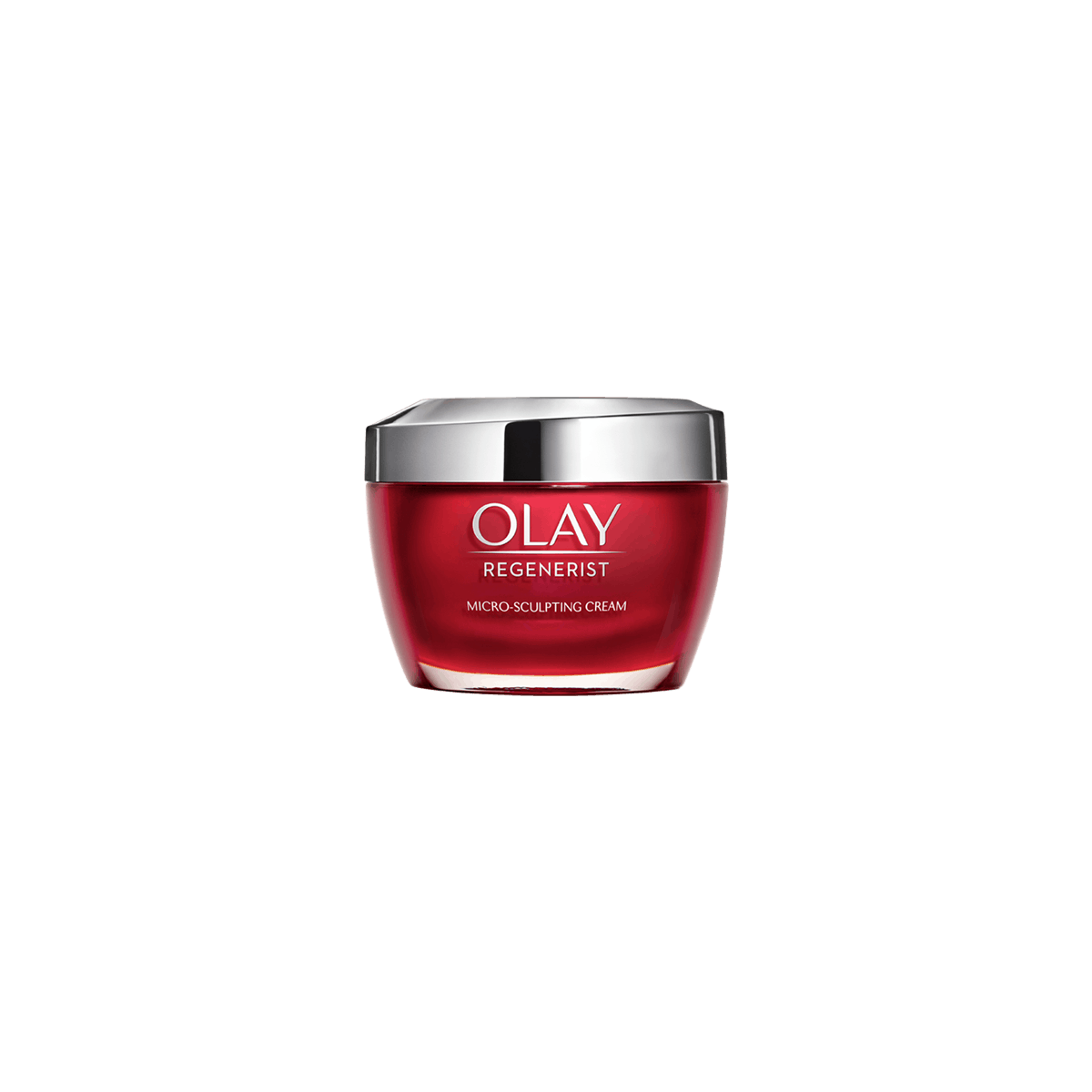
This product has dimethicone, a petroleum-derived ingredient in the silicones family. Silicone makes the skin feel like it’s being hydrated, but it’s simply a short-term effect. Silicones can trap debris in the pores, cause acne and congestion, and can accumulate on the skin.
There is some concern that tocopheryl acetate is at risk of being contaminated with hydroquinone, a known human carcinogen. While we believe this risk to be small, we consider tocopheryl acetate an iffy ingredient. (source)
Laureth-7 can be contaminated with ethylene oxide, a likely human carcinogen. (source)
Polyacrylamide is controversial because acrylamide, which is a decomposition residue of polyacrylamide, is a demonstrated neurotoxin in humans and a carcinogen in animal tests. Acrylamide is banned in the EU. (link)
PEG-100 Stearate can be contaminated with 1,4-dioxane and ethylene oxide, a possible human carcinogen and known human carcinogen respectively.
Benzyl alcohol is listed by the The European Union’s Scientific Committee on Consumer Safety (SCCS) as a well-recognized consumer allergen. (source)
This product contains one or more parabens. These are preservative linked to endocrine disruption and is associated with the proliferation of breast cancer cells. (link)
Ingredients
Potential irritants: 4*
Other Ingredients To Know About
None of these ingredients were found in the products we looked at, but are still important to know about.
Ingredient #1: Mineral Oil
The mineral oils used in cosmetic products are derived from petroleum.
Mineral oil is occlusive—meaning it seals off the skin, preventing air, water or anything else to get in or out. This
“Your skin will look good at first (because the lines are stretched out), but in the long run various cellular processes will work somewhat less efficiently.” says Dr. Jetske Ultee, research physician in Cosmetic Dermatology. “Eventually this will lead to your skin not being able to protect itself and you find yourself in a vicious circle; your skin quickly dries out if you don’t put any cream on and so you keep applying it.“
Ingredient #2: Silicone
Companies love putting silicone in their moisturizers because it makes them feel smooth when applying them and they’re very cheap. They’re also used to make the product water resistant.
In terms of human health, they’re most likely non-toxic. However, the Government of Canada declares some types of silicones—namely siloxane—as a danger to the environment.
However, there are a few good reasons not to use products with silicone in them:
- They form a barrier on the skin that can trap sweat, debris, bacteria, sebum and other debris.
- If you’re acne-prone, this can lead to breakouts.
- They’re not actually helping your skin in any way. It’s more of a band-aid solution that makes the product feel better going on but isn’t doing anything for your skin.
- They can make your skin more dry. Since the silicone clogs the pores, it can throw the skin’s natural hydrating process off. This is on top of the silicone’s seal that prevents moisture from getting in.
- They block other ingredients from absorbing. If you’re layering products like many do, the silicone barrier will prevent them from absorbing into the skin.
- They’re hard to remove. If you do a typical cleansing routine, it might not even be enough to get all of the silicone off of your skin.
Ingredient #3: Hydroquinone
Sometimes labeled as tocopherol acetate, this chemical is commonly marketed as a skin-lightening cream.
Banned in the European Union, Japan & Australia and restricted for use in Canada. This chemical is linked to cancer, ochronosis (a skin condition where the skin turns blueish-grey), and permanent eye damage if exposure to the eye occurs.
Ingredient #4: Artificial Dyes
The use of artificial dyes in cosmetics is controversial. While it’s possible to derive dye from natural materials, the vast majority of dyes used in today’s products are artificial.
Board-certified dermatologist Sonia Batra warns, “These colors can trigger allergies and irritation in the skin, and are suspected to be carcinogens. They are also banned in the European Union.”
Many artificial dyes are made from coal tar and contain heavy metals. These toxins increase the skin’s sensitivity and cause irritation, and when used in products that sit on the skin—like moisturizers—they can absorb into the skin, causing additional damage.
Ingredient #5 – Retinyl Palmitate
You might see this labeled as retinol, retinyl palmitate, retinyl acetate, retinyl linoleate, and retinoic acid. Known as retinoids—a synthetic form of vitamin a—this ingredient is credited with both treating acne and reducing wrinkles.
This ingredient is controversial—there have been a number of conflicting studies published about the safety and efficacy of retinyl palmitate.
The most well-known study is this one, published in 2012. They found that mice, when exposed to retinyl palmitate and then artificial sunlight, developed more tumors and an earlier onset of tumors than mice who weren’t exposed to retinyl palmitate.
If this is also true in humans (which we aren’t fully sure of yet), that’s a big problem.
Since this ingredient is added to products that sit on the skin, we find this concerning. Experts recommend wearing a product with SPF over the product with retinol. However, we believe that the safest option is to completely avoid products with this ingredient.
We won’t completely dismiss those products that contain retinol, but they’ll get an iffy rating from us.
Beware of the Hypoallergenic & Fragrance-Free Claims
If you see the term “hypoallergenic” on a moisturizer, take it with a grain of salt.
While the term is typically used to indicate that the product has no ingredients that will cause allergic reactions, there’s an issue: the term is unregulated by the FDA. This means that manufacturers don’t need to support these claims when they put them on the packaging.
According to Dr. Steve Xu, assistant professor and dermatologist at Northwestern’s Feinberg School of Medicine, he and some of his colleagues tested the 100 best-selling moisturizers from Amazon, Target and Walmart.
The results were shocking—they found that 83% of the products labeled “hypoallergenic” actually contained a potential allergenic chemical.
Not only that, but nearly half—45 percent—of the products they tested were labeled “fragrance-free” but contained some form of fragrance.
Another more general study of 187 children’s products labeled hypoallergenic or otherwise safe for children’s skin found that 89 percent of them contained a potential allergen.
There’s really only one thing you can do to protect yourself as a consumer—try to understand which ingredients your skin reacts to and avoid products that contain those ingredients.
Dermatologist-Recommended: Not As Great As It Sounds
The term “dermatologist-recommended” sounds trustworthy, but what does it actually mean?
The truth is that it means almost nothing.
We have no idea how many dermatologists recommended the product—it could be 2 or five thousand. We have no idea who these dermatologists are or if they’re trustworthy.
Its a marketing buzzword that we recommend ignoring.
What About Alcohol?
The presence of alcohol in skincare is another controversial topic.
There are two different types of alcohol: denatured alcohol which derived from petroleum products, and fatty alcohols derived from natural materials like coconut and nuts.
The bad alcohols that people dislike are denatured alcohols—because they’re drying. On top of that, they’re a potential irritant for those with sensitive skin.
It’s worth noting that some studies like this one have concluded that alcohol is skincare is safe to use.
Typically, the higher the concentration (indicated by being higher in the ingredients list) is more problematic for those with a sensitivity to it.
So, why do brands use denatured alcohol in their products? It’s because the alcohol gives the product a cooling or tightening sensation that oily-skinned gals might find pleasant. This is despite the fact that it’s stripping away the skin’s natural—and important—oils. Alcohols are also used as preservatives.
On the other hand, natural fatty alcohols like cetyl alcohol made from coconuts and stearyl alcohol made from coconut or vegetable oil can actually have a positive effect on the skin. These fatty alcohols are typically used as an emulsifier in skin care products, creating the thick, pleasant texture.
If you have sensitive skin, be careful—fatty alcohols can also be irritating to your skin, and if you’re acne-prone, they can cause breakouts. But overall, they’re generally a good ingredient, not a bad one.
2 Comments
-
Nancy Paddock
Just saw your list!!!!!! I have used some of these. You are right! THANK YOU????❤️


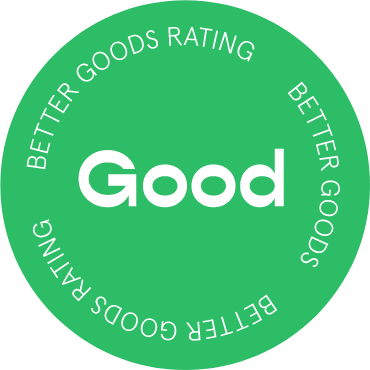

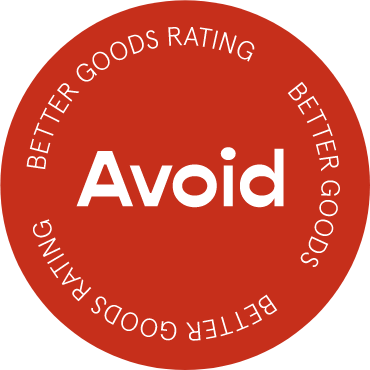

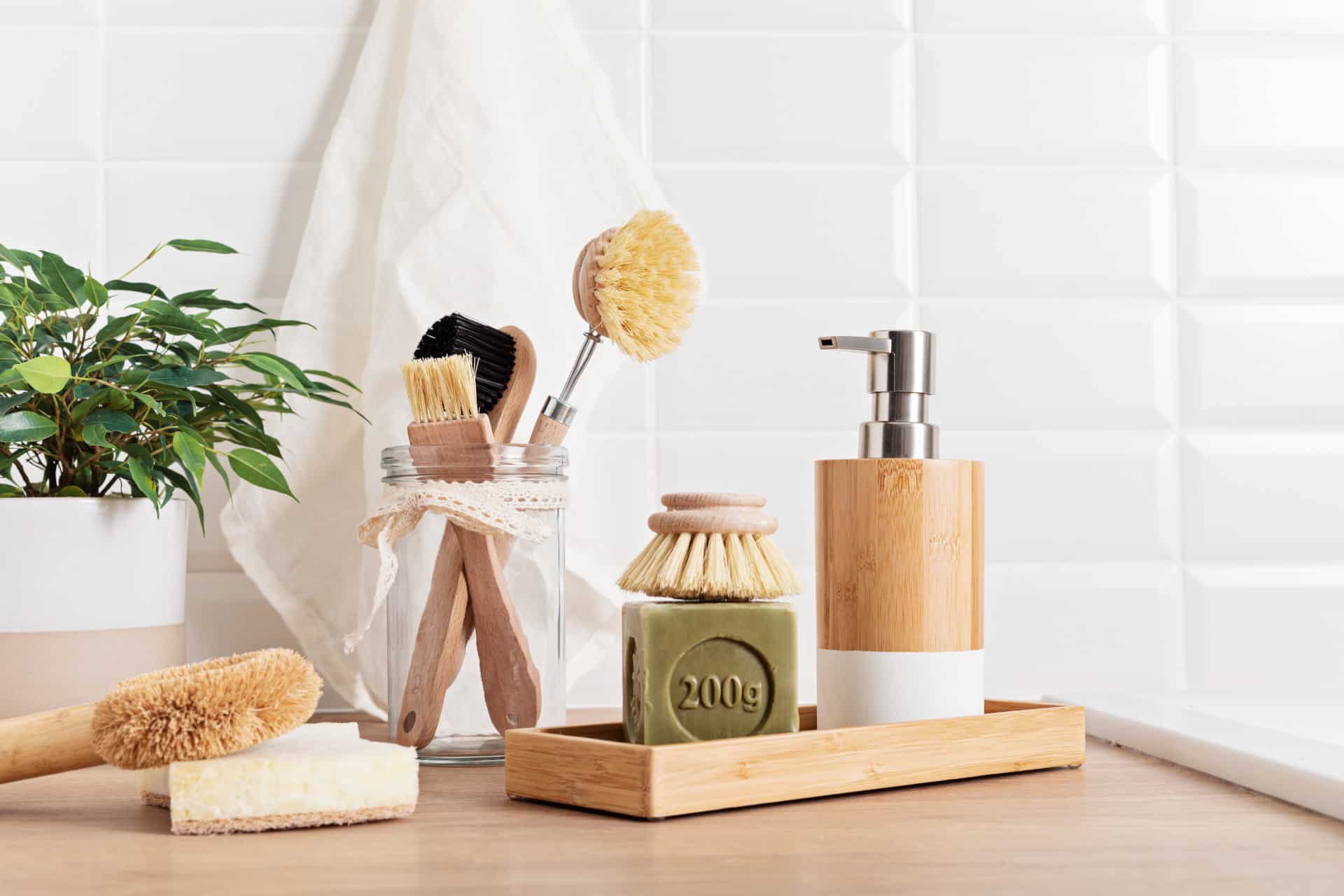

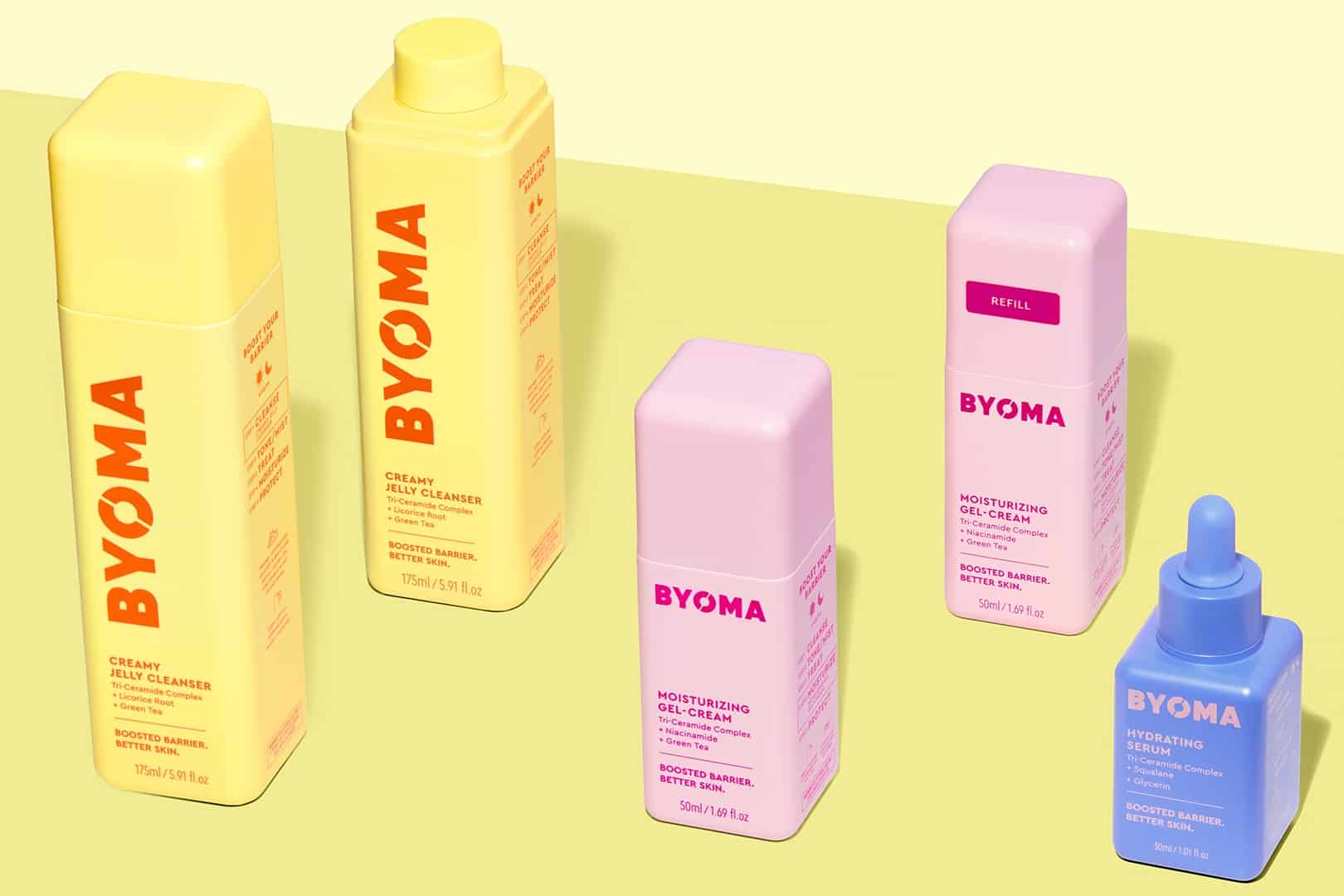
Rebecca Alexander
I brought a jar of CeraVe Moisturing Cream in Walmart. Reading the ingredients on the jar, it doesn’t mention it having parabens. I bought it but on doing more research found it does have parabens! Should I return it because of false advertising??